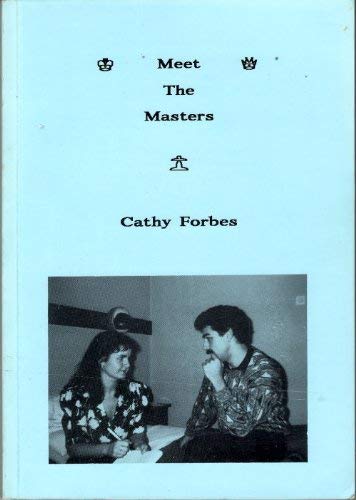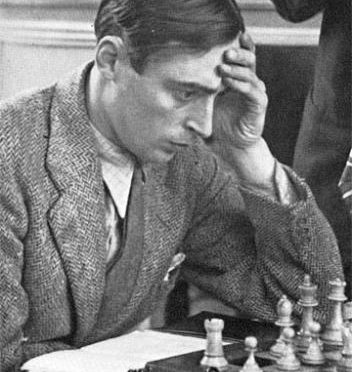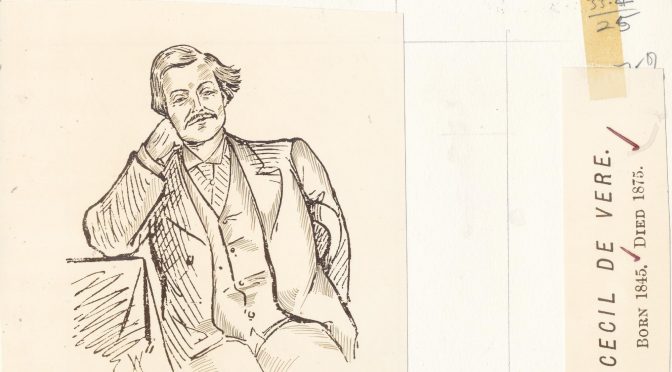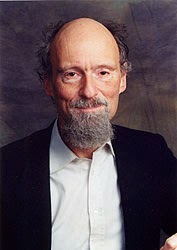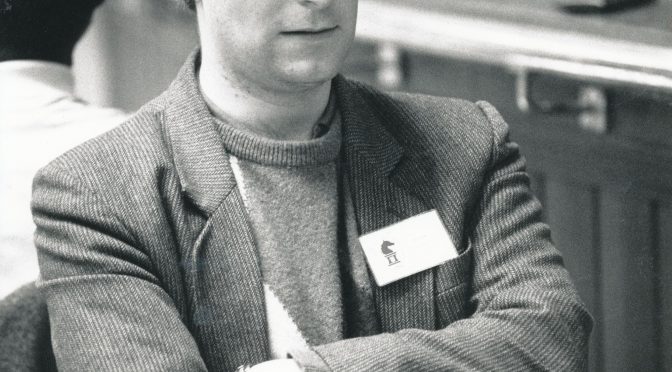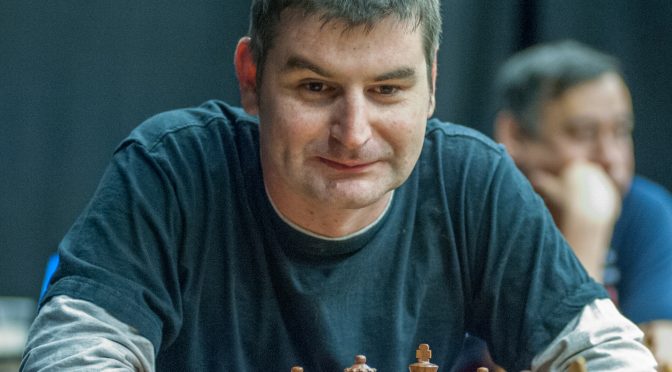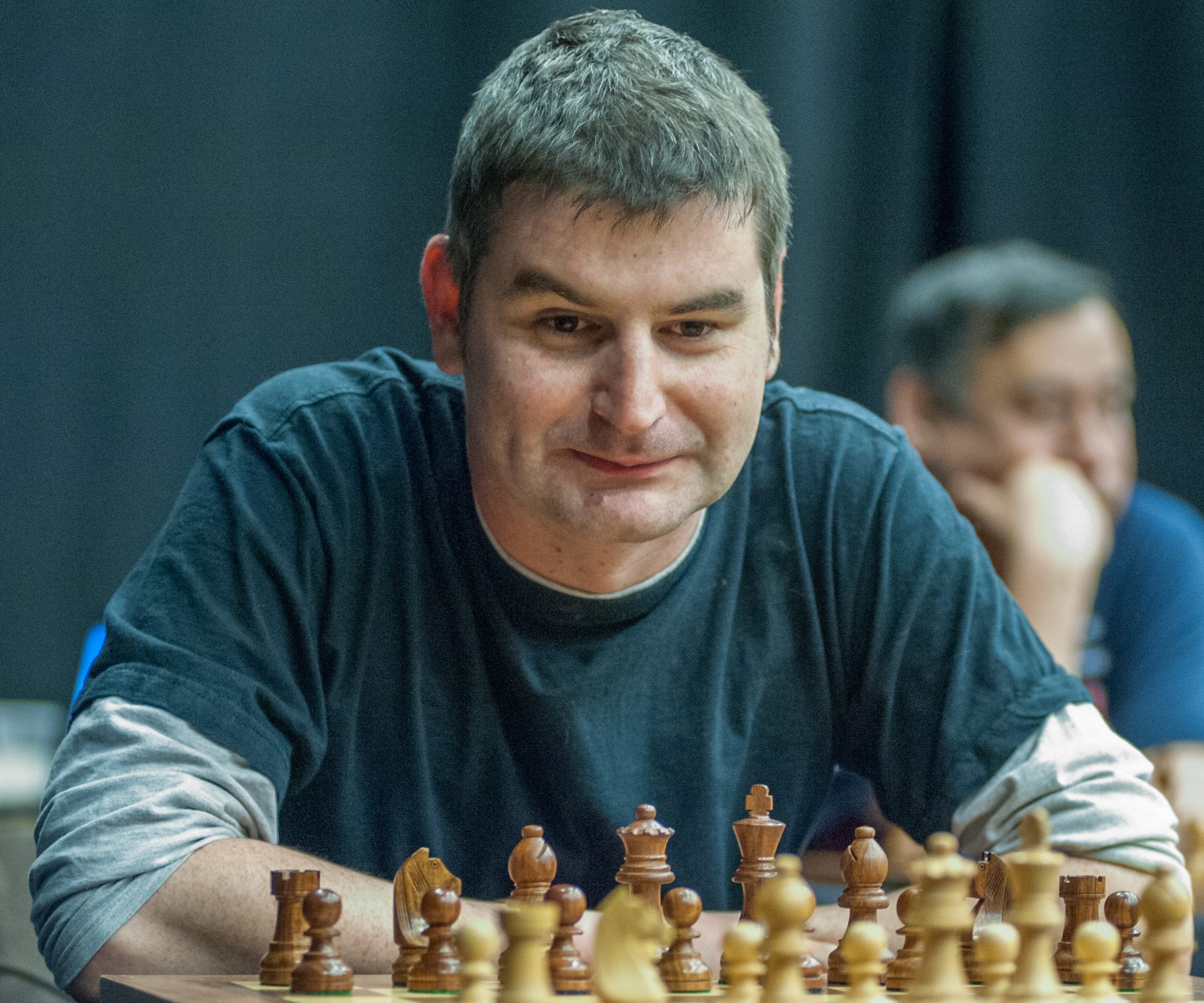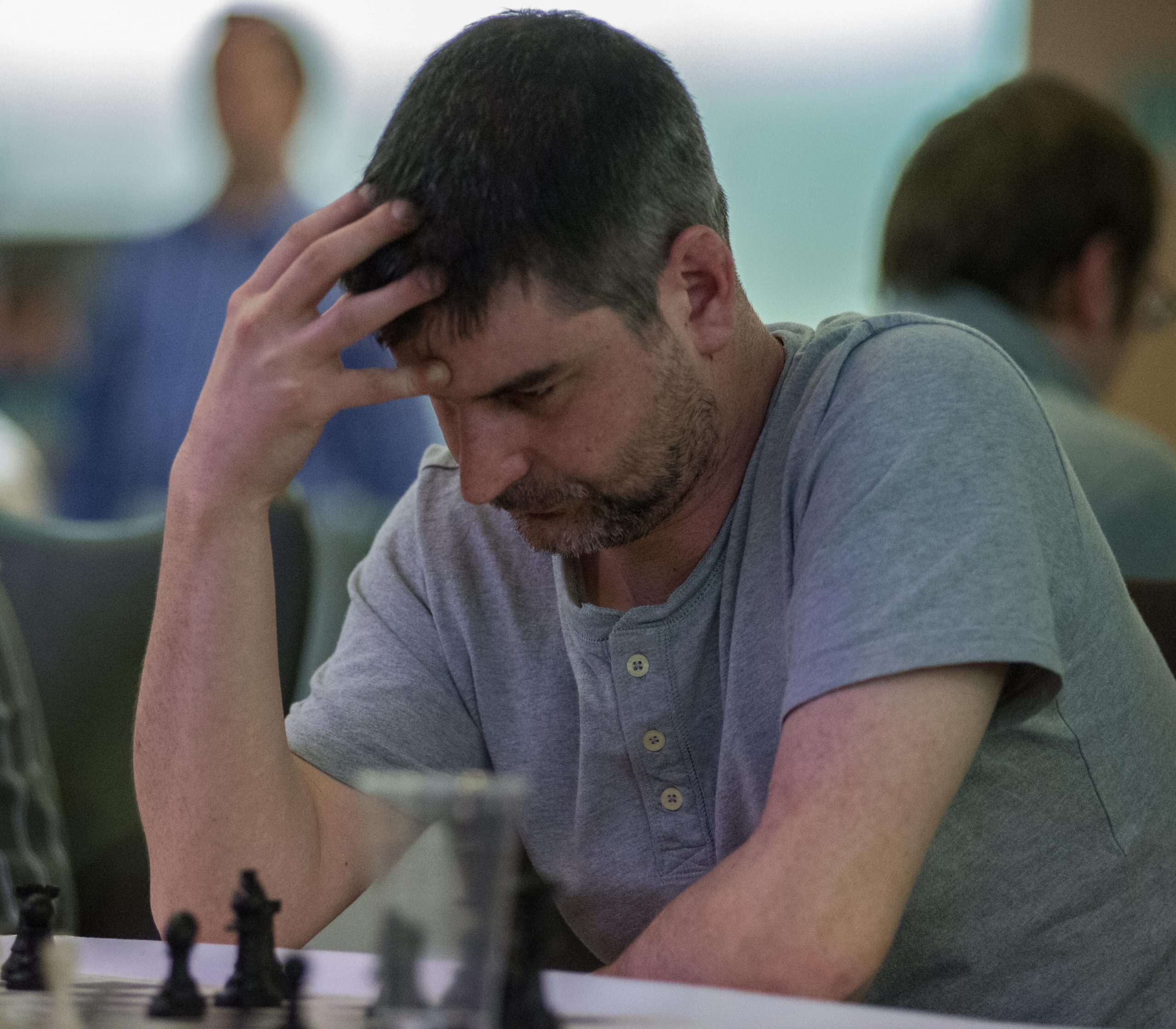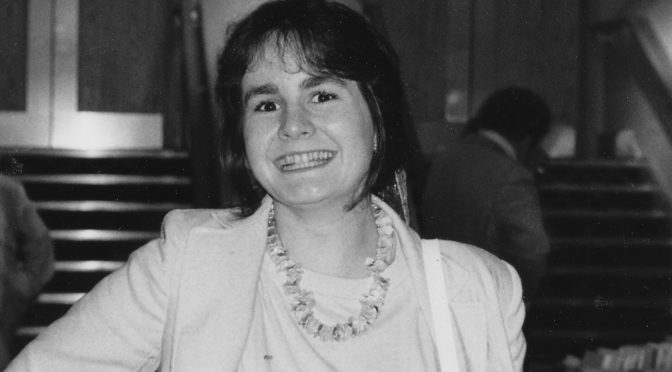Remembering SIM Graham Mitchell (04-xi-1905 19-xi-1984)
Monthly Archives: February 2020
Kings of the Chessboard

“Grandmaster Paul van der Sterren (1956 ), was one of the strongest chess players of the Netherlands. He became twice national champion and represented his country eight times during the Chess Olympiads. In 2001 he retired from being an active player and focused on writing books drawn from his rich chess experience. This is his first English chess book written for Thinkers Publishing.”
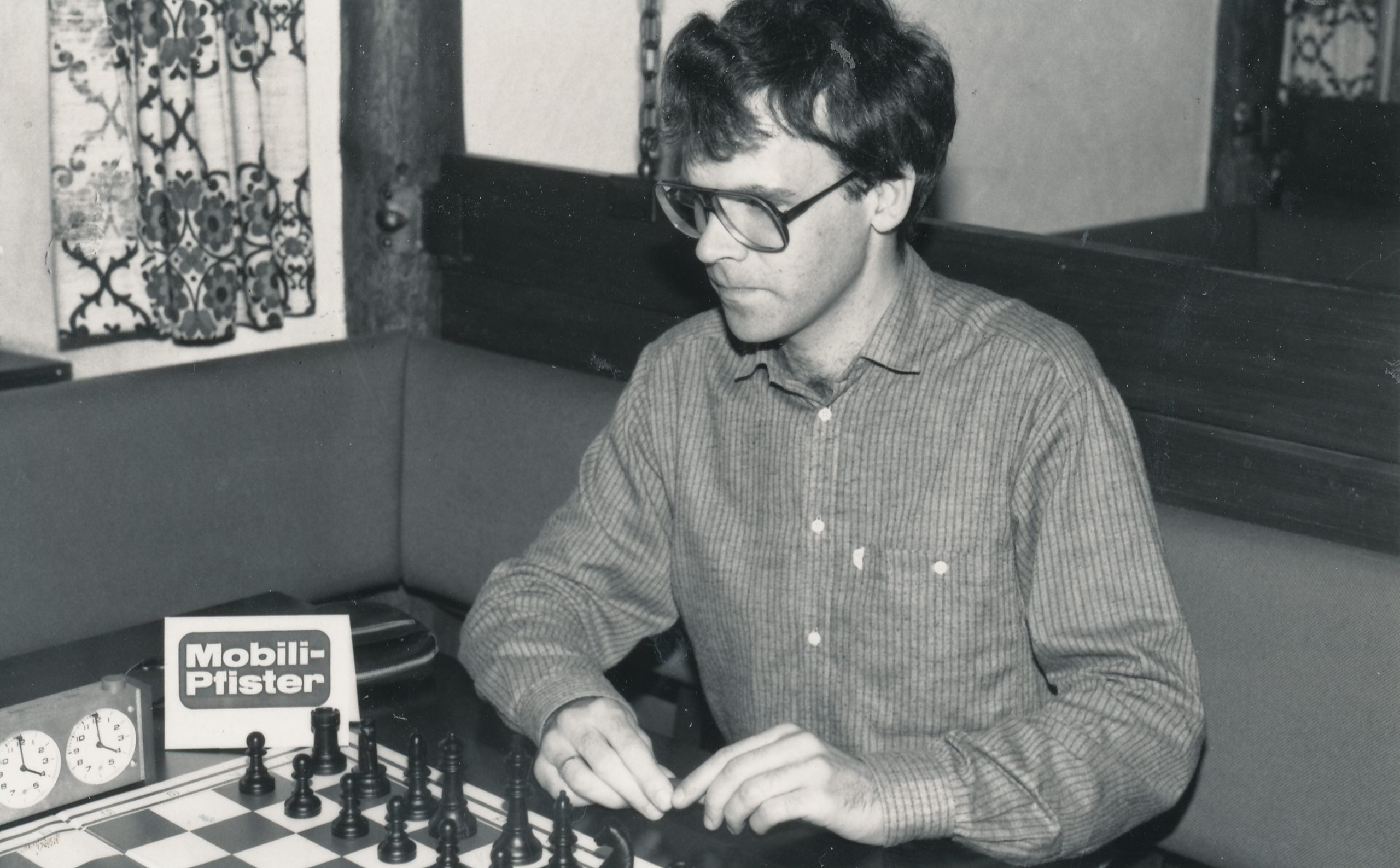
Many chess players are strikingly ignorant of their game’s heritage, so there’s always a place for a new book offering readers a quick spin through chess history.
There are, broadly speaking, several ways this could be approached: a selection of Famous Games for those who haven’t seen them before, a history of the world championship itself, or an essay on the development of chess style and opening theory over the centuries.
Van der Sterren’s book seems to combine all three approaches. How does it fare?
As I have a particular interest in pre-20th century chess history I decided to dive in at the beginning.
We start, not unreasonably, with Philidor. After some biographical information we might be looking forward to seeing how he played.
Alas, not. The author makes the extraordinary claim that “It is true that some fragments of his games have made it into today’s databases, but their authenticity is doubtful and it is likely that these are mostly fictitious games invented by him for the purpose of teaching or demonstrating a particular point he wanted to make.”.
Really? Is van der Sterren confusing Philidor with Greco, perhaps? While it’s true that the games in his books, and there were only a few, were fictitious, my database has one piece of analysis from 1749 along with 60 complete and 5 partial games against named and known opponents from between 1780 and 1795, all but the first played in London. They were collected by Philidor’s friend George Atwood and many of them were published by George Walker in 1835. There is no doubt at all of their authenticity.
We then move onto the match(es) between La Bourdonnais and McDonnell in 1834. A complete game would have been good but all we get is the Famous Position where the Frenchman forced resignation with three pawns on the seventh rank, without any explanation as to how the position arose.
Then comes the first international tournament: London 1851. We meet Staunton and Anderssen, and, guess what, we see the finales of the Evergreen and Immortal Games. Again, if you really want to publish them because your readers might not have seen them before, why not give the complete games?
According to van der Sterren, “Now Black has to play the defensive move 20… Na6.”. Historians disagree about whether or not Kieseritzky resigned before playing this move (he claimed he did), or whether he played the move and Anderssen announced mate, but why not mention the much better, but still insufficient, defence 20… Ba6?
Come to think of it, why not mention that both the Immortal and Evergreen games were casual encounters in which Anderssen could afford to take risks?
Moving on, inevitably, to Morphy, by this point I started to play a game with myself, guessing what I’d find in each chapter. Opera House game? Tick! Queen sac v Paulsen? Surprisingly not.
On to Steinitz. Bardeleben at Hastings? Tick! Van der Sterren talks about Steinitz’s advocacy of positional chess, and then aims to justify the inclusion of this tactical game atypical of his late style by incorporating some callout boxes labelled ‘Misunderstandings’ in a rather ugly childish font: something not repeated elsewhere in the book.
Lasker? Exchange Lopez ending v Capa? Tick! Then, on p49, in a moment of carelessness, we meet ‘Dawid Janowksi’,
On the same page we see a Famous Pawn Ending between Lasker and Tarrasch:
We’re told that “By looking at the position in a concrete way instead of relying on general considerations, it is possible to find a concrete path to salvation for Black.”. It’s White, not Black, who finds a concrete path to salvation by playing, after 40. h4 Kg4, 41. Kg6 rather than the losing Kf6. Although the annotations throughout the book are mostly verbal we do get a variation which demonstrates why Kf6 loses.
Capablanca? Qb2 v Bernstein? Tick! Rook ending v Tartakower? Tick! But not full games.
Alekhine? v Réti in 1925? Tick! Bogo in 1922? Tick! Again, only the closing stages so we don’t get to see how he reached those positions.
To be fair, the book improves as it approaches the 21st century, and we start meeting players the author knew or knows well.
Here, for instance, is a position from a game I must have seen at the time, but had forgotten about.
This is Anand-Karpov Las Palmas 1996. Here, Vishy played Bxh7+!.
“Anand must have felt there is bigger game to be hunted than just a pawn. Still, to forego a perfectly reasonable option with an extra pawn and a draw in the bag, in favour of a piece sacrifice with unpredictable consequences, is not a decision many players would have made. It is a sign of self-confidence, great powers of calculation and bravery; in other words the hallmark of the most pure, sparkling talent.”
This is typical of van der Sterren’s style of annotation: words rather than variations and a tendency towards hero-worship.
Anand himself is, typically, more modest: “Here, I spent a few seconds checking 21. Rxd5 which leaves White with an extra pawn, but as I mentioned earlier I couldn’t be bothered. I saw Bxh7+ and didn’t waste any more time on Rxd5. I then spent some time analysing Bxh7+, and didn’t see a defence for Black. I then realized that I was too excited to analyse and decided to get it over with. He had hardly any time left already and I was sure that he wouldn’t find a defence.”
Does the book succeed? Although I don’t like being negative in my reviews, I’m afraid not. It suffers from trying to do too much in too short a space, and from a lack of historical knowledge and awareness. If you know anything at all about the history of our beautiful games you’ll have seen almost everything before, and you’ll be frustrated by the broad brushstrokes.
Back in 1987, Mike Fox and I were criticised by some reviewers for including a chapter of Greatest Games in The Complete Chess Addict, but they failed to understand that our target market was social players who wouldn’t have seen them before. By the same token, there may still be a market for a collection of Famous Games, Famous Combinations and Famous Endgame Studies. There are several other histories of the world championship, and treatises on the development of chess style and opening theory, but books that are up to date and whose authors have something new to say are always welcome. This book doesn’t really do any of these things very well, and there is very little original content or thought. If you try to be everything to everyone you end up being nothing to nobody.
However, the book is, for the most part, nicely produced, with a lot of attractive photographs. For someone just starting out in competitive chess who would like to know more about the game’s history, this could be just what they want to pique their interest and encourage them to study this fascinating aspect of chess in more detail.
Richard James, Twickenham, 18th February 2020

Book Details :
- Paperback : 264 pages
- Publisher: Thinkers Publishing; 1 edition (20 May 2019)
- Language: English
- ISBN-10: 9492510537
- ISBN-13: 978-9492510532
- Product Dimensions: 17.1 x 1.9 x 23.5 cm
Official web site of Thinkers Publishing

Remembering IM Hugh Alexander CMG CBE (19-iv-1909 15-ii-1974)
We remember Hugh Alexander who passed away on Friday, 15-ii-1974. The death was registered in the Borough of Cheltenham. Currently his burial / cremation site is unknown.
The Alexander Family
Conel Hugh O’Donel Alexander was born on Monday, April 19th, 1909 in Cork, Munster, Republic of Ireland.

Hugh’s parents were Conel William Long Alexander (1879-1920) and Hilda Barbara Alexander (née Bennett) (1881-1964) who married in Hook Church, Hampshire. His father was a Professor of Civil Engineering from County Donegal and his mother was the daughter of a timber merchant and was from Birmingham.
Hugh’s father moved to Hook in Hampshire. At some point they returned to Cork and then relocated to Birmingham.
In the 1911 Irish census aged two Hugh was recorded as being a Presbyterian. The household consisted of his father, mother and two servants Maud McAuliffe (19) from County Cork and Johanna Hanlon (20) from Cork City all living at 20, Connaught Avenue, Cork.
At the time of the census all members of the household were capable of reading and writing apart from Hugh who was recorded as “cannot read”.
and Hugh’s father signed the Return as follows :

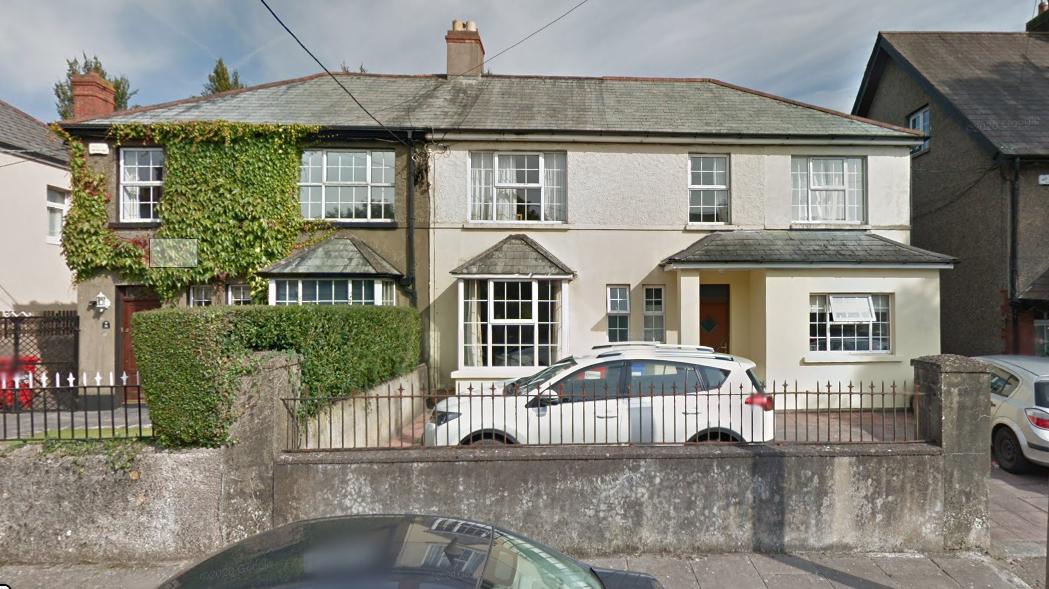
Hugh attended Londonderry College and then went to King Edward’s School, Birmingham.
Hugh married Enid Constance Rose Crichton Neate (1900-1982) in October 1934 and the marriage was registered in the district of Westminster, Middlesex.
According to Rodric Braithwaite :
“Enid, was an equally striking personality. She was descended from one of the defenders of the Eureka Stockade, the “birthplace of Australian democracy”. She was educated at the Sorbonne, a formidable dialectician, art historian and collector. In her later years she returned to Australia, where she was endlessly hospitable to passing Russian chessplayers, and to itinerant musicians, including my own father.”
Hugh and Enid had a son Michael (19 June 1936 – 1 June 2002) who became the foreign policy secretary to Margaret Thatcher and the UK ambassador to NATO. Here is Michael’s obituary.
Michael married Traute Krohn. Michael and Traute gave Hugh a grandson, Conel Alexander who is a Cosmochemist at the Earth and Planets Laboratory, Carnegie Institution for Science, Washington.

Staff Scientist
We contacted Conel and he replied more or less instantly as follows:
I don’t have that many anecdotes or photos of my grandfather. My great aunt, his sister, was the family archivist. She had a lot of photos of when they were young in Cork and Birmingham. She did send me some photos before she died, but not the sort that would interest your readers. She lived in Fort Erie, Canada and my grand father used to visit when in North America on ‘business’. I don’t know how much she knew about what he did but she must have had some inkling. Unfortunately, since she died I have lost touch with her family. Amongst the photos she sent me were some of my great grandfather and his Irish relatives. An archivist at Cork University contacted me a few years ago. According to him, my great grandfather has a rugby player and organizer of Irish rugby (as well as an engineering professor), but also opposed to Irish independence which might well have caused trouble for him and his family had he not died when he did.
I was 13 when my grandfather died and wasn’t told how ill he was until almost the end. I would have liked to have know him better, but I assume he was always on the go and my father was a diplomat and we had been living abroad until I was 8 (US, Moscow and Singapore). Even after moving back to London, we would only see him a few times a year as far as I remember. I think he probably realized that he had missed out on some things as he was planning to retire (early I believe) and come to live with us in London, only to learn that he had terminal cancer.
It just so happened that next door to where I work is a rather upscale retirement home. A man called Authur Levinson had retired there with his wife. He was sent to Bletchley when the USA joined the war and had worked with my grandfather. Arthur’s wife had somehow followed him to the UK as a driver. Both had gotten to know my grandfather during the war and then afterwards when Arthur joined the NSA. Somehow Arthur found out I was working next door, and my family used to visit them occasionally. They had an Enigma machine that they used to show my kids, but they were probably too young to understand the significance. Arthur told me that the NSA had tried to recruit my grandfather when they heard he was retiring from GCHQ, but he was adamant that he wanted to retire to spend more time with family and to write.
I was told that, rather surprisingly, he didn’t think that chess was a suitable pastime for a healthy boy. I don’t know if this was the reason, he believed in trial by fire, or he just could not help himself (he was extremely competitive at everything he did), but when we did play chess a few times he used to give me huge advantages and then thrash me! After a few such humiliations, I gave up. I don’t think I would have been very good anyway and my grandfather probably recognized that, so perhaps it was his way of letting me find out early. My father was an olympic fencer, so naturally I tried that too. For a while I was able to ‘bully’ my way to wins, until I came up against people who really knew what they were doing. I abandoned that too.
One other thing I learned about about my grandfather fairly recently is that he taught Freeman Dyson mathematics and chess at Winchester. Freeman contacted me out of the blue having come across my name somehow. Remembering my chess experience, I ventured that he must have been a rather impatient teacher. Not a bit of it, apparently, but then Dyson must have been the ideal student for him.
Working for John Lewis
Prior to the second world war Alexander was officially employed by John Spedan Lewis in his Department store in Oxford Street. When he returned from Buenos Aires (“good air”) from the 1939 Olympiad he travelled aboard the RMS Alcantara. Here is the entry in the passenger list for September 19th, 1939 :
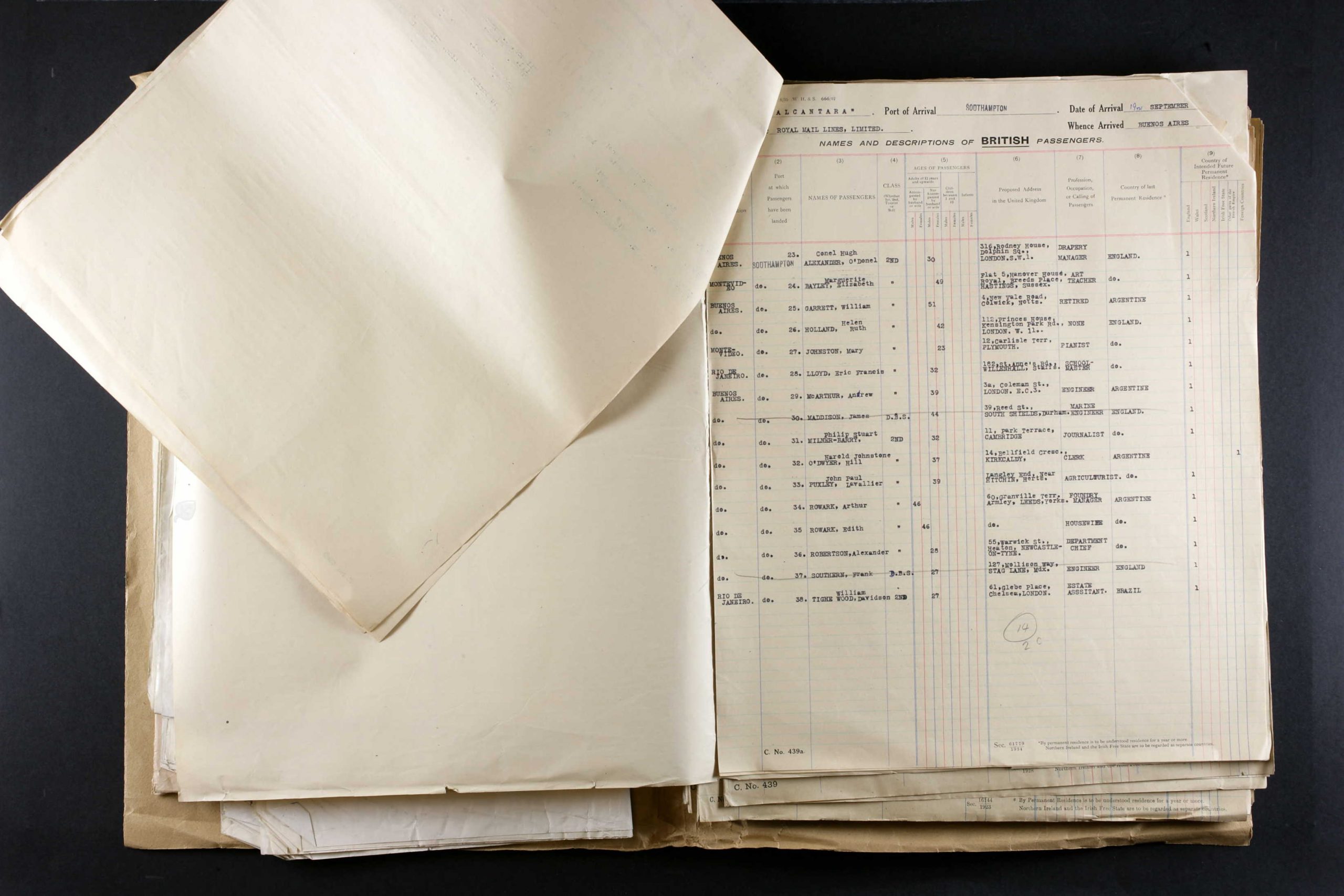
and here is Alexander’s entry in detail. Note that his occupation is described as “Drapery Manager” :

Hugh sailed from Buenos Aires, Argentina in September 1939 to arrive at Southampton September 19th 1939. The ship was the Alcantara operated by Royal Mail Lines Ltd hence the RMS Alcantara.
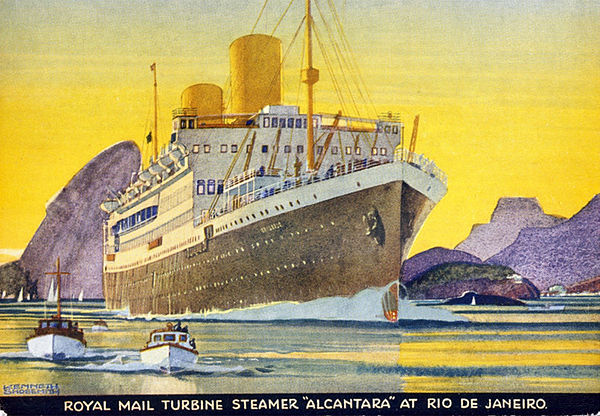
According to Wikipedia : “RMS Alcantara was a Royal Mail Lines ocean liner that was built in Belfast in 1926. She served in the Second World War first as an armed merchant cruiser and then a troop ship, was returned to civilian service in 1948 and scrapped in 1958.
Ports of the voyage were : Buenos Aires; Montevideo; Santos and Rio de Janeiro and Hugh’s official number was 148151 and he travelled 2nd class. His proposed destination residential address was
316, Rodney House, Dolphin Square, London, SW1
According to Wikipedia : “The proximity of Dolphin Square to the Palace of Westminster and the headquarters of the intelligence agencies MI5 (Thames House) and MI6 (Vauxhall Cross) has attracted many politicians, peers, civil servants and intelligence agency personnel as residents.”
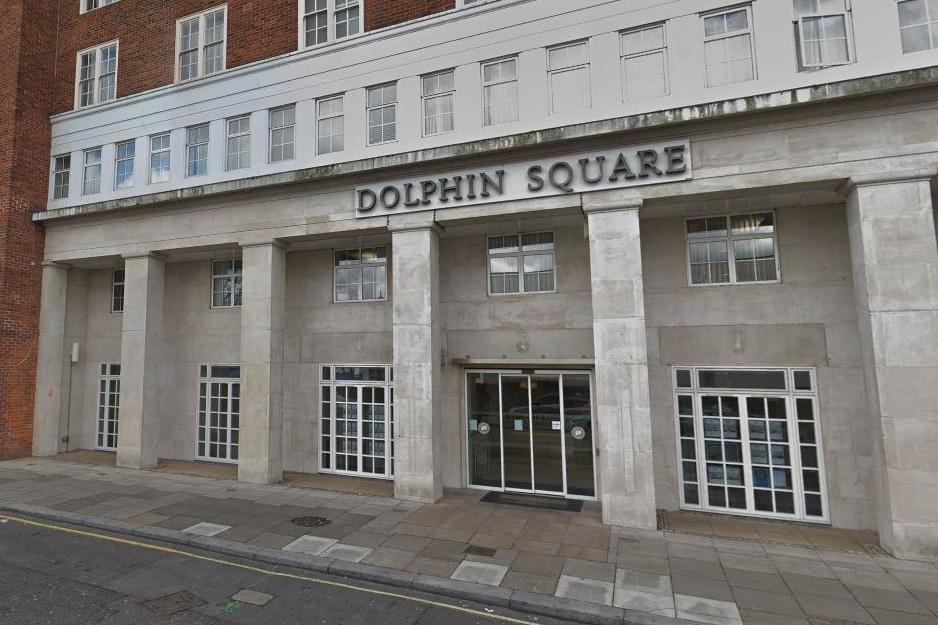
There was some discussion of Drapery Manager in another place.
An Obituary from Stuart Milner-Barry, Part One
From British Chess Magazine, Volume XCIV (94, 1974), Number 4 (April), pp. 117-120 by PS Milner-Barry :
“A proper assessment of Hugh Alexander, who died on February 15th 1974 must await a later issue. But I think he might have been pleased to see our last game published, and I give the score of it below, with notes based on our usual analysis immediately after the game. Over the past 45 years, ever since he went to Cambridge, we played whenever opportunity offered serious games with clocks.
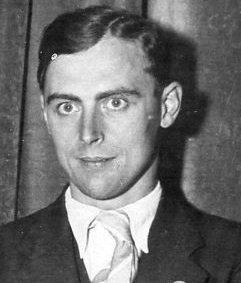
Before the war they were played mostly at my mother’s house in Cambridge, and after the war and my own marriage at our house in Blackheath. When he moved to Cheltenham the opportunities became fewer but no year ever passed without two or three such games, usually at Easter or Christmas.
Alexander always used to say, it was certainly true of me, that this was the kind of chess that he enjoyed most. The games were conducted with the utmost vigour, though not without a good deal of propaganda on both sides. I suppose he won in the proportion of about two to one, but the disparity in strength never became one-sided. Nearly all the games opened 1 P-K4, P-K4; he played the Lopez when I allowed him. (I usually played the Petroff or Philidor), and I played a mixture – in the early days the Vienna and latterly mostly the King’s Gambit. On the whole Black did better than White for both of us.

The only concession we made to advancing years was that latterly we contented ourselves with four hour sessions and 36 moves, instead of 40 in 5 hours. We thought we had done enough for honour by then, and the games were usually finished in the time.
Hugh stayed with us the weekend before Christmas, when this game was played. He looked ill, but he was very cheerful and as good company as ever. He loved a good argument, and as my family so too,- the evening meal was its usual lively affair! I am myself a man of peace, and intellectually lazy; so in deference to my feelings the argument was suspended, before it became too hot. I am afraid they all thought I was a spoil-sport. It was as happy a visit as any of us could remember and it is difficult to accept there will not be another.
As for the game, it was not one of our most exciting encounters. But it is quite an interesting one, and shows Hugh playing as
well as ever – certainly much too well for me. But then he usually did.”
Following PSMBs contribution, in the same obituary there was this from Harry Golombek :
C.H.O’D. Alexander and the ‘B.C.M.’ by Harry Golombek
I have written elsewhere about Hugh Alexander both as a person and as a chess-player and I also intend to devote a forthcoming article in ‘The Times‘ on Saturday to an appraisal of his place in British Chess. Here, however, I would like to describe briefly his connection with this magazine over the years and to show how
important his help was to the progress of the ‘BCM‘.
In the years immediately preceding the Second World War, Ash Wheatcroft and I had made a determined effort to maintain and increase the role of the ‘BCM‘, he in a managerial capacity and I as its editor. With the coming of war and the departure of both of us into the army a sort of caretaker regime had to be provided. It worked as well as could have been expected but inevitably there had been a decline both in quality and financially. When peace came, the quality improved since it was possible to get more and better contributions but the financial aspect became almost alarming.
The question arose – was there a need for the magazine and if so how could that need be fulfilled with the fairly limited resources at hand. Some of us thought there was, but the ways and means were not so clear. Of all those who thought like this Alexander was the most effective in his approach to the problems. I know that from his very youth onwards he had been convinced of the importance of the ‘BCM’ to British chess and, being a practical idealist, when the
crisis came he set about dealing with it in the most expeditious way.
In November 1946 he became a director of the B.C.M. and continued in that position till February 1952, by which time the magazine had been set on a solid basis from
which it was unlikely to be shaken. It was his idea that Brian Reilly be asked to act as editor and almost his first act as director was to write a letter to him inviting him to become so. Then, in January 1947, he himself took over the editorship of the games department, an arduous task which he fulfilled with great competence and the utmost conscientiousness until May 1949 when the heavy work of the Civil Service department of which he was head compelled him to hand over the Games Section to me.
Before, however, that he gave up this post he, again in the most practical way possible, rendered the ‘BCM‘ another service. He wrote a book giving a selection of the games from the last period of Alekhine’s life and generously donated half the royalties to the ‘BCM‘ in order to bolster up its slender finances.

Even after he had to give up official connection with the magazine he retained a strong interest in its welfare. So, even though this recognition is belated and posthumous, I thought it was right to afford readers the possibility of joining with me in thanking High Alexander for all that he did in this respect in especial. At any rate, such matters should be on record for the chess historian.
The Anglo-Soviet Radio Match
From The Anglo-Soviet Radio Chess Match by E.Klein and W.Winter :
“CHO’D Alexander was born in Cork in 1909 and learned chess at the age of ten. He was educated at King Edward School, Birmingham, where he exhibited early prowess by winning the Birmingham Post Cup. In 1927 he won the British Boy’s Championship. During his student days, from 1928 to 1932, he was a convincing champion of Cambridge University. Subsequently he competed in five British Championships, winning the title in 1938. He also played in several international tournaments, his outstanding performance amongst these being Hastings in 1938, where he shared second and third prizes with Keres, following Reshevsky who won the tournament, and ahead of Fine and Flohr. In 1939, in the England-Holland match, he had the satisfaction of defeating the ex-World Champion, Dr. Euwe, in a sensational games, drawing the return game.
A brilliant mathematician, he took a first at Cambridge and chose a scholastic career, joining a well-known public school (Winchester College). From there, via a short spell in a business appointment (John Lewis), he entered the service of the Foreign Office, where, during the war years, his valuable work earned him the OBE.
He plays imaginative and courageous chess and is never afraid of the wildest complications.”

An Obituary from Stuart Milner-Barry, Part 2
From British Chess Magazine, Volume XCIV (94, 1974), Number 6 (June), pp. 202-204 by PS Milner-Barry :
With the death of Hugh Alexander at the age of 64, British chess has lost the outstanding figure of the past forty years. His active playing career over some thirty years included two victories in the British championship and regular appearances in all representative teams from l93l-58, except when the nature of his Civil Service
duties prevented him from travelling behind the Iron Curtain. During the whole of the period after the war he was the regular top board for the England team. In the Hastings international congress he twice won the Premier tournament, on the second occasion tying with Bronstein. His victories in this series included two world champions (Euwe and Botvinnik) and numerous others in the Grandmaster class. He was an outstanding example, like H.E.Atkins and Dr. Milan Vidmar, of the amateur who could combine an exacting professional life of great responsibility and distinction with success in competitive international chess at the highest level and with the increasing professionalism of the game and the demands of knowledge and research that it makes upon the masters, this was much more difficult in Hugh’s time than in an earlier age.
It was indeed in the international field that his fame will principally rest. On the British championship scene, although he always did well before the War, and won convincingly at Brighton in 1938 in a strong field, his record did not match his abilities.

He never established anything like the superiority over his contemporaries that Atkins in a former age and Penrose in a later achieved. He won the championship again, in 1956, but that was a weak year when the Moscow Olympiad took first claim on the leading British players. It was not that he cared less – like all the great players he hated losing, though he was the most magnanimous of opponents – but that he seemed to require the stimulus of the great occasion, and of a world famous name on the other side of the board, to bring out the best in him.
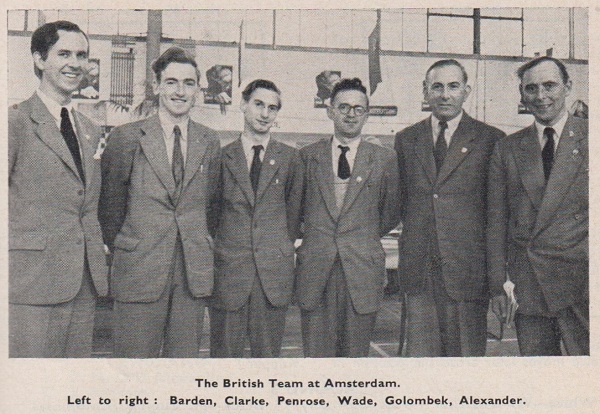
Alexander was perhaps the only English player of his day whom the Grandmasters would have treated as on a level with themselves. On his day he was liable to beat any of them, and they were well aware of it. In his younger days he was very much the gay cavalier, and a brilliant combinative and attacking player with a touch of genius. Latterly he lost some of this elan, and adapted his style to the responsibilities of the B.C.T. top board. His opponents too, with a healthy respect for his powers, were less inclined to give him opportunities. He was as capable of the dead-bat technique as anybody, and to that extent (to my way of thinking anyway) his games became less interesting, with quick draws making a higher contribution to his top-board results than in earlier years. But none the less he was the anchor-man of the British team until his retirement after the 1958 Olympiad.
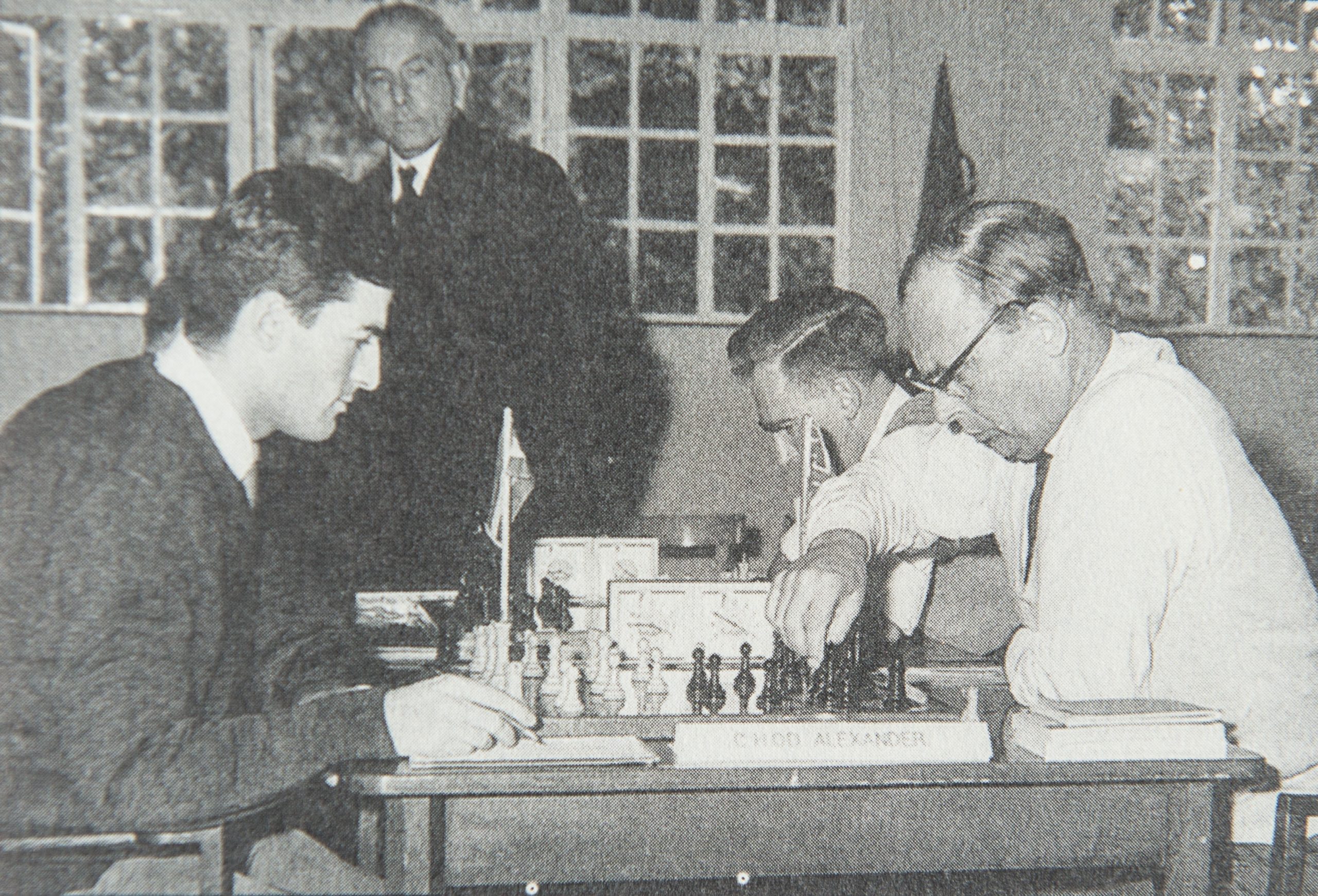
It was a great pity he gave up the game over the board at 50. He had years of good chess in him. But I think he felt he had scaled all the peaks he could scale, and that he was finding top-class competitive chess a burden difficult to reconcile with his Civil Service work and the prospect of a gradual and inevitable decline in his powers did not appeal to him. I made many efforts to tempt him back to the arena, but to no avail. I do not think he ever seriously regretted his decision, and in his last years he immensely enjoyed correspondence chess.
In 1964, Alexander became non-playing captain of the B.C.F. team, and held that role continuously until after the Siegen Olympiad in 1970.
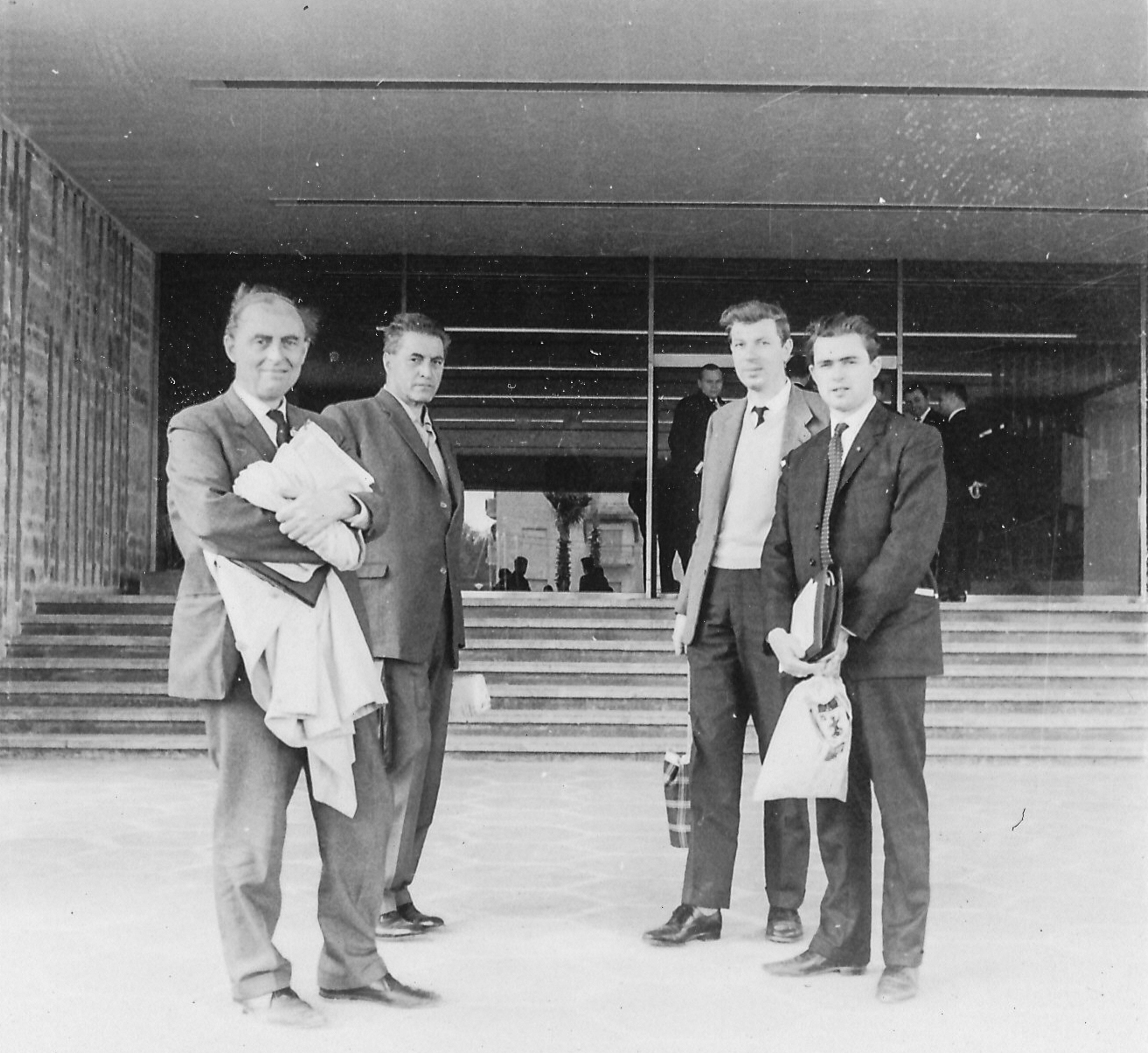
It was rather a disappointing period for British chess, and the results, while we were rebuilding a young team, could not – even with Penrose’s outstanding efforts at top board – have been expected to be favourable. But he threw himself wholeheartedly into all the work sponsored by the B.C.F. and the Friends of Chess to find and develop talent in the younger generation, and before he died the fruits of these labours were beginning to appear. He would have been proud indeed to have witnessed our recent triumph in the Anglo-German match.
As a captain he was, of course, immensely liked and respected by his team. My impression was that he took his responsibilities almost too seriously, and agonised too much over his decisions about whom to play and whom to rest. Nevertheless on balance he thoroughly enjoyed the work, and certainly, in spite of his innate modesty, he
was never one to be disturbed by ill-informed or irresponsible criticism, of which he had his share.
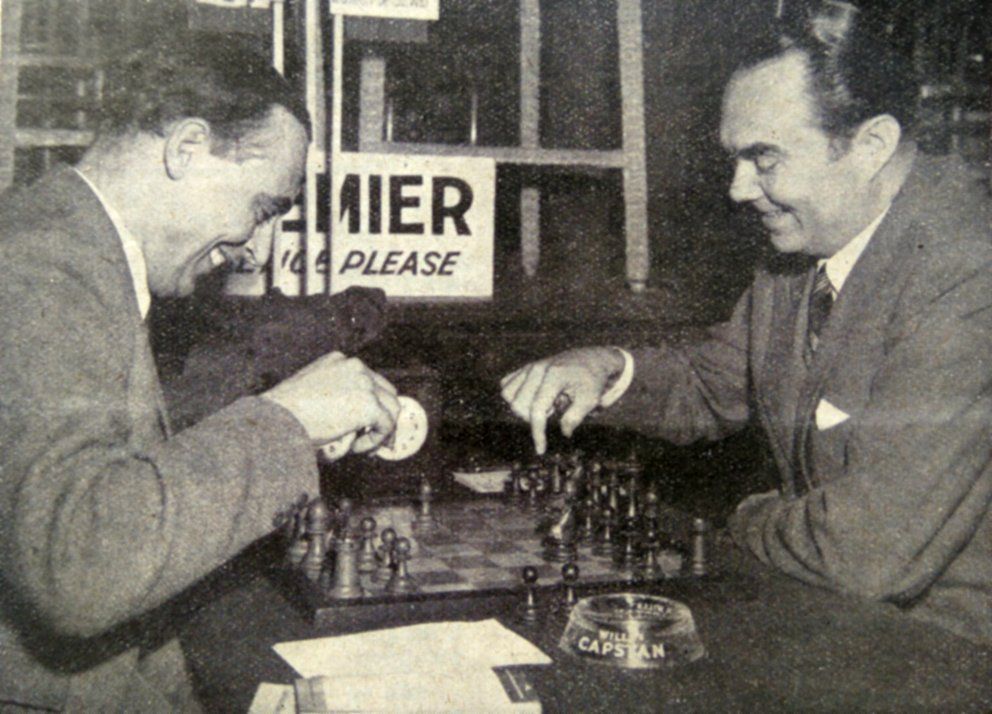
I suppose his most famous tournament result was his equal first with Bronstein at the Hastings Christmas Congress of 1953. Coming at a time when we were gloomily resigned to British players bringing up the rear in international tournaments, this created a great sensation.
The game with Bronstein lasted over 100 moves and Alexander won a most difficult Queen and Pawn ending by impeccable technique.


He went on with the Black pieces to massacre Tolush, the other visiting Russian Grandmaster.
Immense interest was created by this event. The popular press carried diagrams of the successive phases of the Bronstein saga. It was reported on the radio. By comparison with the furore created by the Spassky/Fischer match, it was no doubt small beer, but for those days the publicity was tremendous, and Alexander became the
hero of the hour.
It was entirely characteristic of him that this adulation did not go to his head. He kept everything in proportion, and encouraged everybody else to do the same. He said all the right things about Bronstein, but he did not claim, as one tends to do on these emotional occasions, that international sport was a panacea for friendship between the nations. Altogether it seemed to me an impeccable performance both on and off the board.
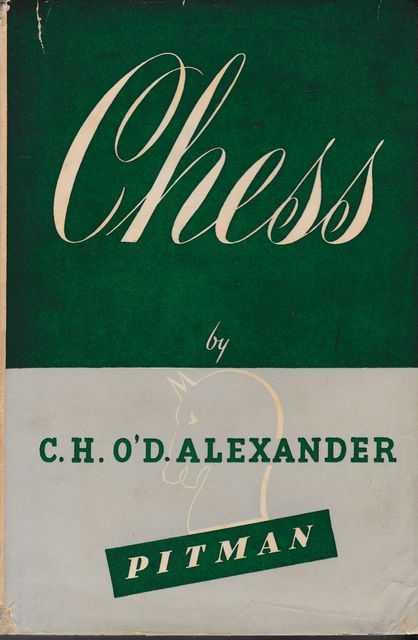
It is as a player that Hugh would, I think, have best wished to be remembered; and I have left myself little room to say anything about him as a journalist and writer. We are blessed, as readers of the B.C.M. will know, with many good and interesting writers on the game. But Hugh had, I believe, exceptional talents as a journalist. In his columns in the ‘Sunday Times‘, and latterly the ‘Financial Times‘, he set a very high standard. He always had something fresh and original to say, especially, I think, to the intelligent amateur rather than the expert; and he said it in a way that was both disarmingly modest and yet lively and entertaining. The warmth of his personality came out clearly both in his writing and in his public speaking – both were entirely natural and wholly without amour-propre.
His articles gave great pleasure to a wide circle, and many who never met him in the flesh must have felt that they had come to know him as a person. Similarly his book on the Spassky-Fischer match
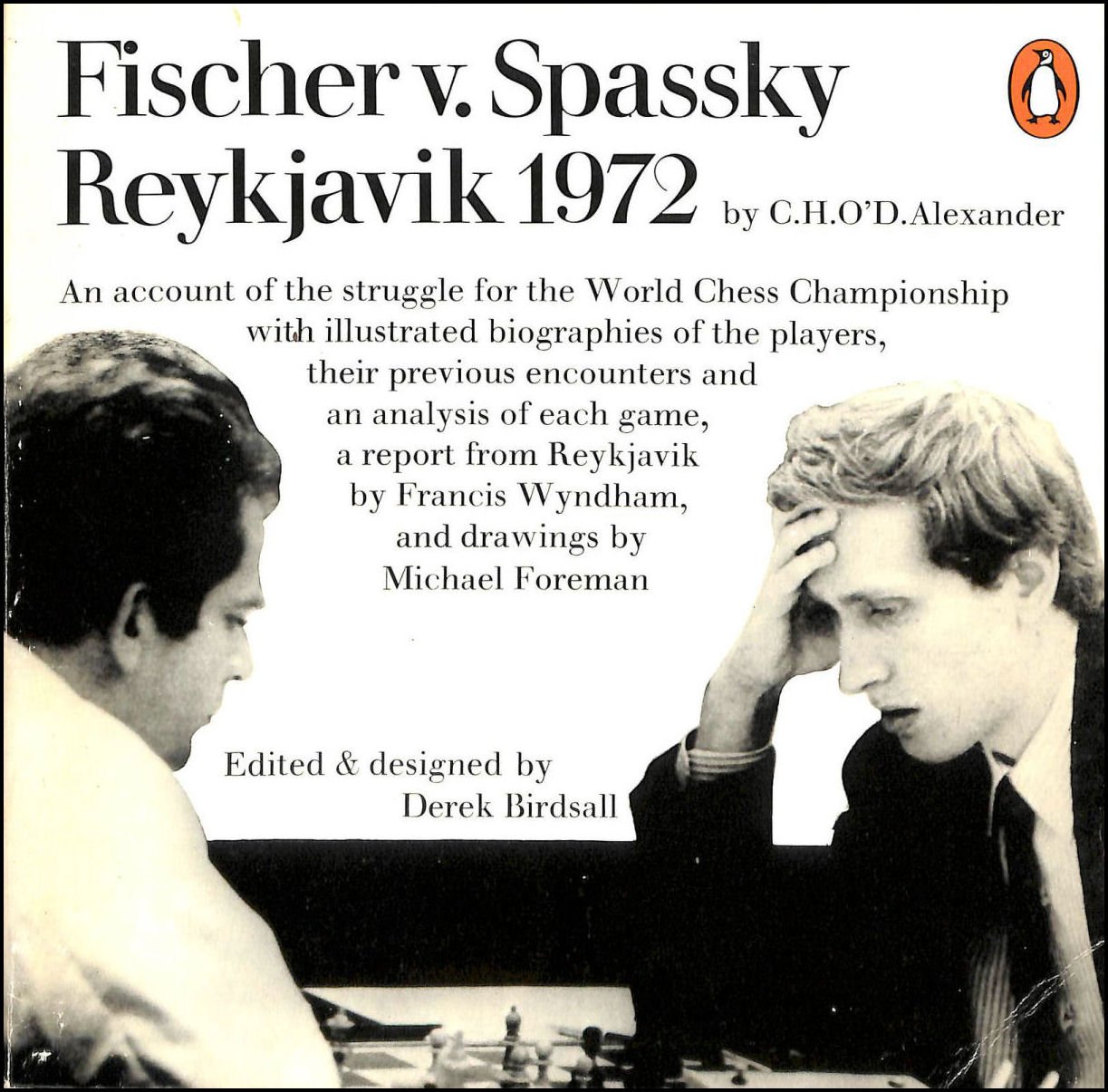
(like the ‘Book of Chess’, which was written in the last year of his life) is an extremely vivid, as well as scholarly, piece of writing. It is almost impossible to believe that it was completed, within days of the conclusion of the match, by a man apparently under sentence of death throughout its progress.

Now that it has come, the loss of Hugh Alexander to British chess and chessplayers, alike as player, writer, administrator and friend, is immeasurable.
An Obituary from BH Wood
From CHESS, Volume 39 (1974), Nos. 693-94, March, p.162 by BH Wood :
The death of Conel Hugh O’Donel Alexander deprived English chess of one of its most vivid characters. Born l9th April 1909, he learnt chess at the age of 8.
From a Londonderry college he went to King Edward’s School, Birmingham, where as a schoolboy he won the Birmingham Post cup, which carries with it the unofficial championship of Staffordshire, Warwickshire and Worcestershire. Going on to Cambridge, he not only won the University championship four years in succession, but picked up first-class honours. He won the British championship in 1938.
In 1939 I found myself on a boat with him bound for the Chess Olympiad in Buenos Aires. He was team captain with Sir George Thomas, P. S. Milner-Barry and H. Golombek : other distinguished members of the team.
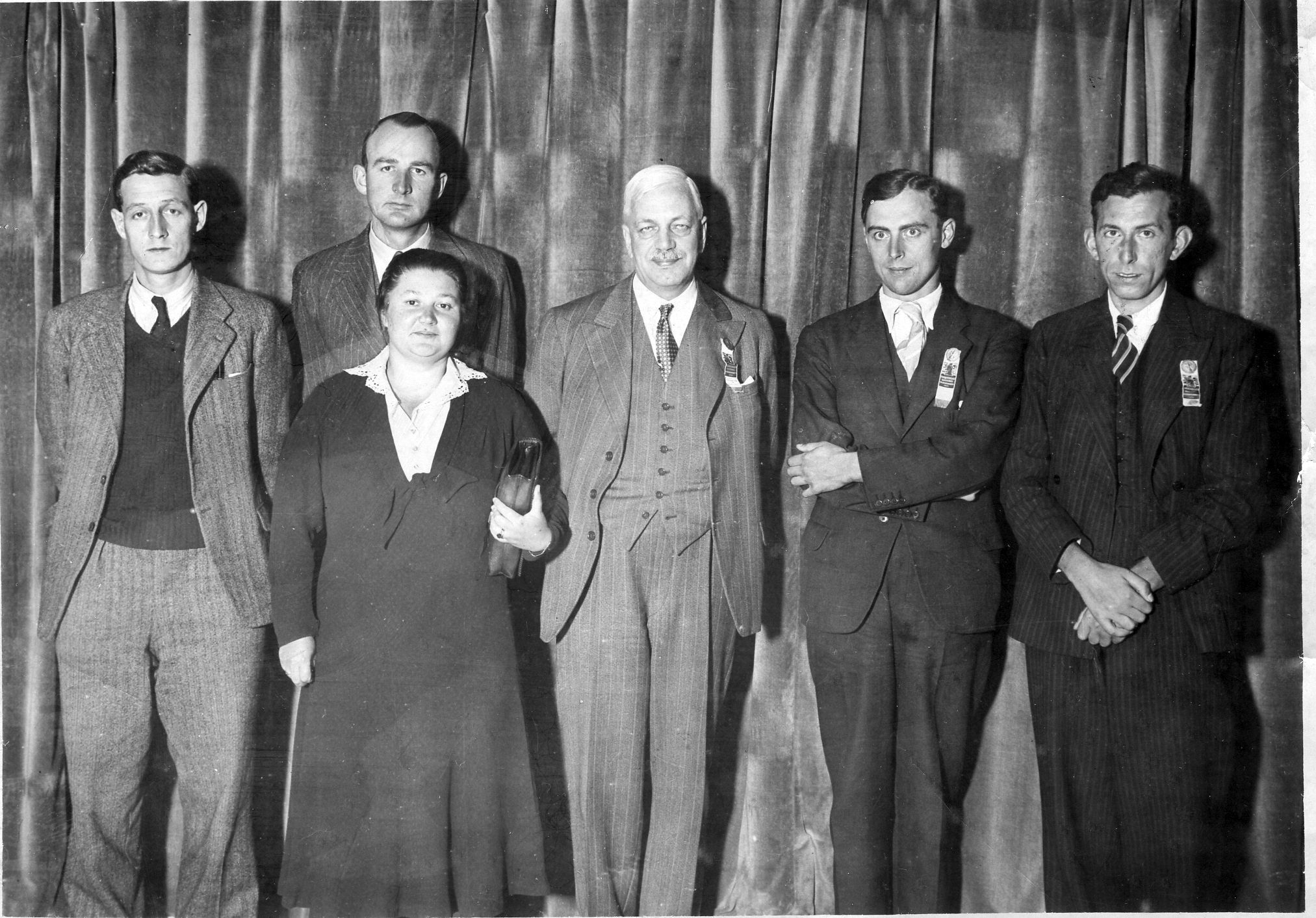
War broke out after about six rounds. With typical determination, Alexander jettisoned chess for patriotism, caught a boat home, volunteered for service on disembarking, and within a few weeks had attained the rank of colonel in British Intelligence. He remained attached to Intelligence and the Foreign Office until his retirement a few months ago. As a curious consequence of this commitment, though he settled in to the team captaincy for the British Chess Federation in the biennial chess Olympiads and participated in many chess events abroad, he was never allowed to travel anywhere behind the iron Curtain.
His fame certainly did, however. In the radio match, Britain v USSR in 1946, the most important event in British chess for a decade before and after, he found himself pitted against Mikhail Botvinnik, then at the height of his powers and destined to hold the world championship for 14 years. The first game he lost; the second he won, in superb style. His great adversary was outplayed.
He had some great years at Hastings. A 120 move victory over Bronstein with a queen and pawns endgame stretching over l3 hours through 3 days, earned headlines in the national press unequalled until the Spassky-Fischer furore of 1972, won him first place in 1954 and started him with a chess column in the Sunday Times. He was equal with Bronstein, above O’Kelly, Matanovic, Olafsson, Teschner, Tolush, Tartakover, Wade and Horne.
Hastings illustrated Alexander’s weaknesses as well as his strengths. Twice he won the premier tournament there, only to finish among the tail-enders the year after. Only once more was he to win the British championship; in a rather weak field, entering at the last minute with typical opportunism.
He was a brilliant conversationalist and speaker, a fine bridge player, a master mathematician, an expert on codes, a first-class journalist and writer. Among varied other interests were croquet and philately. He threw himself wholeheartedly into anything he did. His organization, “The Friends of Chess”, provided generous financial support for a wide range of chess events. A few days before his death he was full of plans for the future, including a big History of British Chess. He burnt himself out. The world of chess is a poorer and duller place without him.”
A Tribute from GCHQ
From the GCHQ Official site :
“The great mathematician G. H. Hardy described C. H. O’D. Alexander as the only genuine mathematician he knew who did not become a professional mathematician. Hardy recognised that Alexander’s failure to win a fellowship at the Cambridge Tripos exams was most likely due to his attention being absorbed by chess. Conversely, Alexander’s fellow chess International Master Harry Golombek said of the two-time British Champion “the demands of his profession left him with comparatively little time for [chess] practice and study; otherwise he would certainly have been of true grandmaster class, and possibly even of world stature”. Above both chess and mathematics, Alexander prioritised leading the British Government effort on cryptanalysis.

Alexander was an early recruit to Bletchley Park; he began in Hut 6 working on Army and Luftwaffe Enigma messages before moving in 1941 to Hut 8 to join Alan Turing’s work on the Naval Enigma. Alexander had one of the most agile minds of the new breed of mathematical cryptanalysts; he proved the best at the pen and paper methods of ‘banburismus’ that reduced the computational work of Enigma attacks and his military aptitude test assessed him as suitable for development up to four star general. Although he has not achieved the renown of Good, Turing, Tutte, and Welchman, he was responsible for many breakthroughs. Perhaps the most significant was spearheading the UK-US joint work breaking the Japanese CORAL system used by Naval attaches. More importantly, as a former teacher and head of research at John Lewis, Alexander was much better suited to the organisational and administrative tasks of Hut 8 than the hyper-rational Turing. Alexander gradually assumed more and more of this work. The story goes that one day when Turing arrived late at the Park and the record book asked him to name the head of his section; Turing wrote “Mr Alexander” and with the logic of bureaucracy Alexander was treated as the head of Hut 8 from then onwards. Praise for Alexander’s leadership is a theme common to all those who worked in Hut 8.
After the war, Alexander briefly returned to John Lewis before returning to the new GCHQ and continued to excel as both a cryptanalyst and leader. By 1949 he had been appointed head of the cryptanalysis division. It was a post that he held until his retirement, despite offers of promotion to more senior positions. He used the weight of his position to testify strongly as a character witness on behalf of Alan Turing during Turing’s indecency trial. By 1971, already past the age of retirement by two years, Alexander decided to step down. Both GCHQ and their partners were keen to make continued use of his expertise and offered all manner of consultative work, which he declined. He died in 1974 and although his obituaries rightly spoke in glowing terms of his chess achievements, the impact of his more secret work still cannot be fully revealed.”
Hugh and Correspondence Chess by Tim Harding
“Correspondence chess is only mentioned briefly in the article. CHO’D took up international postal chess in 1963 playing board 3 for the BCCA “Socrates” team in the Eberhardt Wilhelm Cup, a European team event. He annotated his first two games to finish in the November 1964 issue of the BCCA Magazine, Correspondence Chess, one of which is in my history of British CC.
He had in fact taken board 2 for GB against the USA in the 1,000 board match which began in 1935 but was never completed. Alexander’s opponent was Fred Reinfeld (according to Chess Magazine) but I have never seen a result and don’t know if they actually played many moves.
Starting in 1964 Alexander played in a GB-USSR postal match, with a draw and a loss against Yudovich.
In 1965 he started CC Olympiad 6 preliminaries on board 3 in section 1 for GB and scored 3 wins and 5 draws; he was the only player not to lose to M. Ali Farboud of Iran, the country which won the group. (Farboud played on the Iranian team in the 1962 and 1964 FIDE olympiads.) I have only found two of Alexander’s games from this tournament.
Next GB played in the preliminaries (section 3) of the 7th correspondence olympiad (starting 1968) with a much stronger team which won its group. Alexander played board 2 below Adrian Hollis. His score of 6 wins and one draw earned him the ICCF international master title. I have only found three of his games from this event.
In 1972 Alexander started, again on board 2, in the olympiad final but had only completed one or two of his games when he died, and the unfinished games were taken over by Ken Messere who found it hard (since he was given no notes) to work out what Hugh had planned in various complicated middle game positions.
Alexander also played most years for Gloucestershire in the Counties and District correspondence tournament run (then) by the BCF and my book also includes a win against Peter Clarke from that event. It is a pity that more of Alexander’s CC games are not known. I have only 17 plus a few that Messere completed.”
In the March issue of CHESS for 1963, (Volume 28, Number 427, pp.147-155) William Winter wrote this:
Thrives on strong opposition
The late 1920’s and the early thirties produced a crop of fine players most of whom are still in full Practice. The leading representatives of this group are C. H. O’D.Alexander, H. Golombek, R. J. Broadbent
and P. S. Milner-Barry, of whom Alexander is to my mind infinitely the greatest. It is true that he has only once been British champion while, at the time I write (July 1955), Golombek and Broadbent have each held the title on two occasions, but he has a remarkable record against the grand masters.
Like Yates, of whom his style is reminiscent he requires the best opposition to bring out the best in him. Among his victims are three Soviet grand masters, including the
world champion Botvinnik, and he has secured a number of other notable scalps. Of all his games the one I like best is that against Gligoric in the Staunton Centenary Tournament in 1951. The great Yugoslav who won the tournament simply did not know what had hit him.
Anomalous naming of Openings
Alexander’s approach to the theory of openings is very interesting and highly practical. He does not try to acquire a wide comprehensive grasp of the openings as a
whole, but concentrates on little practical variations of which he makes an exhaustive study, often discovering qualities which have hitherto escaped notice. A case in point is his rehabilitation of the Dutch Defence with an early . . .P-KN3, a line which, if there is any justice in chess nomenclature, should certainly be called the Alexander variation. I fear however that this is unlikely as the names given to the chess openings are ridiculous in the extreme. Take for example this very Dutch Defence. So far as I know (and my knowledge of these things is extensive) no Dutch-player has ever practised it, while it was played regularly for over twenty years by the English master H. E. Bird, who also published a considerable amount of analysis on it. This is the more surprising in that the kindred system P-KB4 f6r White, is called by the name of Bird’s Opening! There is another funny case of a variation of the Slav Defence invented by Gerald Abrahams. I played this in a short match against the Dutch master Noteboom. The latter was favourably impressed, and adopted it himself in a few games, with the result that it has ever since been called the Noteboom variation, although before I played it against him he had neither seen nor heard of it. It is high time that the whole question of nomenclature of the Chess Openings was taken in hand by the International Federation.
From Chessgames.com :
“Conel Hugh O’Donel Alexander was born in Cork, Ireland. Awarded the IM title in 1950 at its inception and the IMC title in 1970, he was British Champion in 1938 and 1956.
During the Second World War, he worked at Bletchley Park with Harry Golombek and Sir Philip Stuart Milner-Barry, deciphering German Enigma codes and later for the Foreign Office. Alexander finished 2nd= at Hastings (1937/38) tied with Paul Keres after Samuel Reshevsky and ahead of Salomon Flohr and Reuben Fine. He held Mikhail Botvinnik to an equal score (+1, -1) in the 1946 Anglo-Soviet Radio Match, and won Hastings (1946/47) while finishing equal first at Hastings (1953/54). He represented England on six Olympiad teams. Alexander was also an author of note. He passed away in Cheltenham in 1974.”
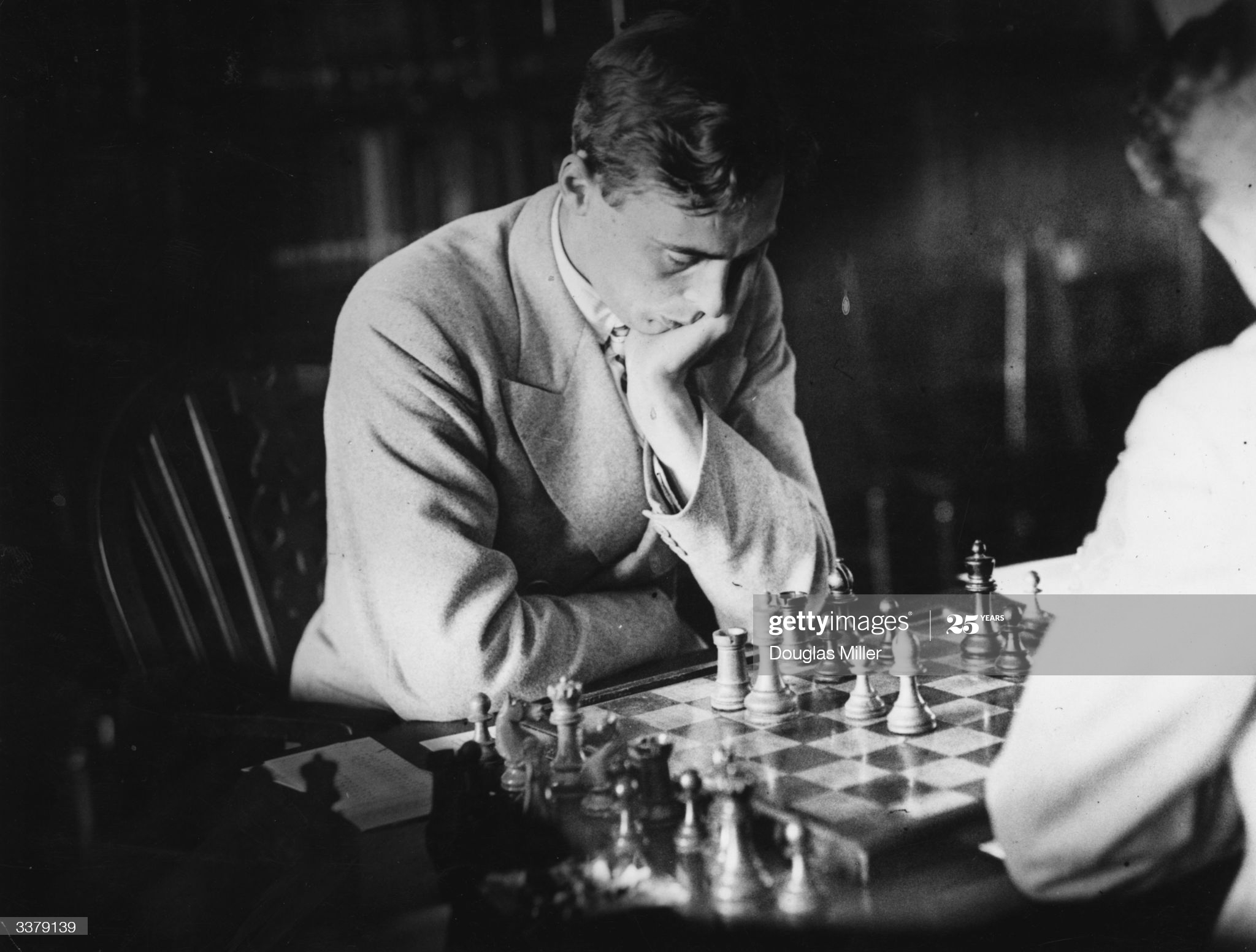
From The Oxford Companion to Chess by Hooper & Whyld :
International Master (1950), International Correspondence Chess Master (1970). Born in Cork, he settled in England as a boy. In spite or because of his intense application at the board his tournament performances were erratic. From about 1937 to the mid 1950s he was regarded as the strongest player in Great Britain, although he won only two (1938, 1956) of the 13 British Chess Federation Championships in which he competed; he played for the BCF in six Olympiads from 1933 to 1958. Holding a senior post at the Foreign Office, he was not permitted to play in countries under Soviet control or influence; but when he did compete abroad he achieved only moderate results. His best tournament achievement was at Hastings 1937-8 when he was second (+4=5) equal with Keres after Reshevsky ahead of Fine and Flohr; but he is better remembered for his tie with Bronstein for first prize at Hastings 1953-4. He won his game against Bronstein in 120 moves after several adjournments, and the outcome became a kind of serial in the press, arousing great national interest in the game. Alexander was the author of several books on chess, notably Alekhine’s Best Games of Chess 1938-1945 (1949) and A Book of Chess (1973).
From The Encyclopaedia of Chess by Anne Sunnucks :
For many years the chess correspondent of The Sunday Times, The Spectator (pseudonym Philidor) and the Evening News. There was probably no “chess name that was better known to the non-chess-playing element of the British public than that of Hugh Alexander. His victory over Russian Grandmaster David Bronstein at Hastings in 1953, after a struggle which lasted for 120 moves and took 13 hours, made chess front page news in the British press.
Born in Cork on 19th April 1909, Alexander picked up the game at prep school at the age of 8. In 1926 he won the Boy’s Championship, later to be recognised as the British Boy’s Championship, at Hastings. After coming down from Cambridge University, where he won the university championship four times, Alexander taught mathematics at Winchester College from 1932 to 1938. He later joined the Foreign Office.

One of the few British players who might have reached World Championship class if he had chosen to devote sufficient time to the game, Alexander was at his best when he faced a top class opponent.
During his chess career, he scored victories over two World Champions Botvinnik and Euwe, and he beat a number of other Grandmasters, international tournaments were all at Hastings where he came =2nd in 1938 with Keres, half a point behind Reshevsky and ahead of Fine and Flohr; 1st in 1947 and =1st with Bronstein in 1953. In 1951 tournament he came =5th.His other hobbies included bridge, croquet and philately, He was the Author of Alekhine’s Best Games of Chess 1938-1945 (Bell), Chess (Pitman) and joint author with T.J. Beach of Learn Chess; A New Way for All (Pergamon Press);

A Book of Chess (Hutchinson) 1973; The Penguin Book of Chess Positions (Penguin) 1973.

Here are further third party articles of interest :
A Tribute to Hugh Alexander by Sir Stuart Milner-Barry
Conel Hugh O’Donel Alexander: A Personal Memoir by Sir Stuart Milner-Barry
Here is an interesting article on his film appearance.
Here is his detailed Wikipedia entry
According to C.N. 10817 Hugh lived at various addresses when working at GCHQ :
- Brecken Lane, Cheltenham.
- 28 King’s Road, Cheltenham, GL52 6BG.

- Old Bath Lodge, Thirlestaine Road, Cheltenham, GL53 7AS.
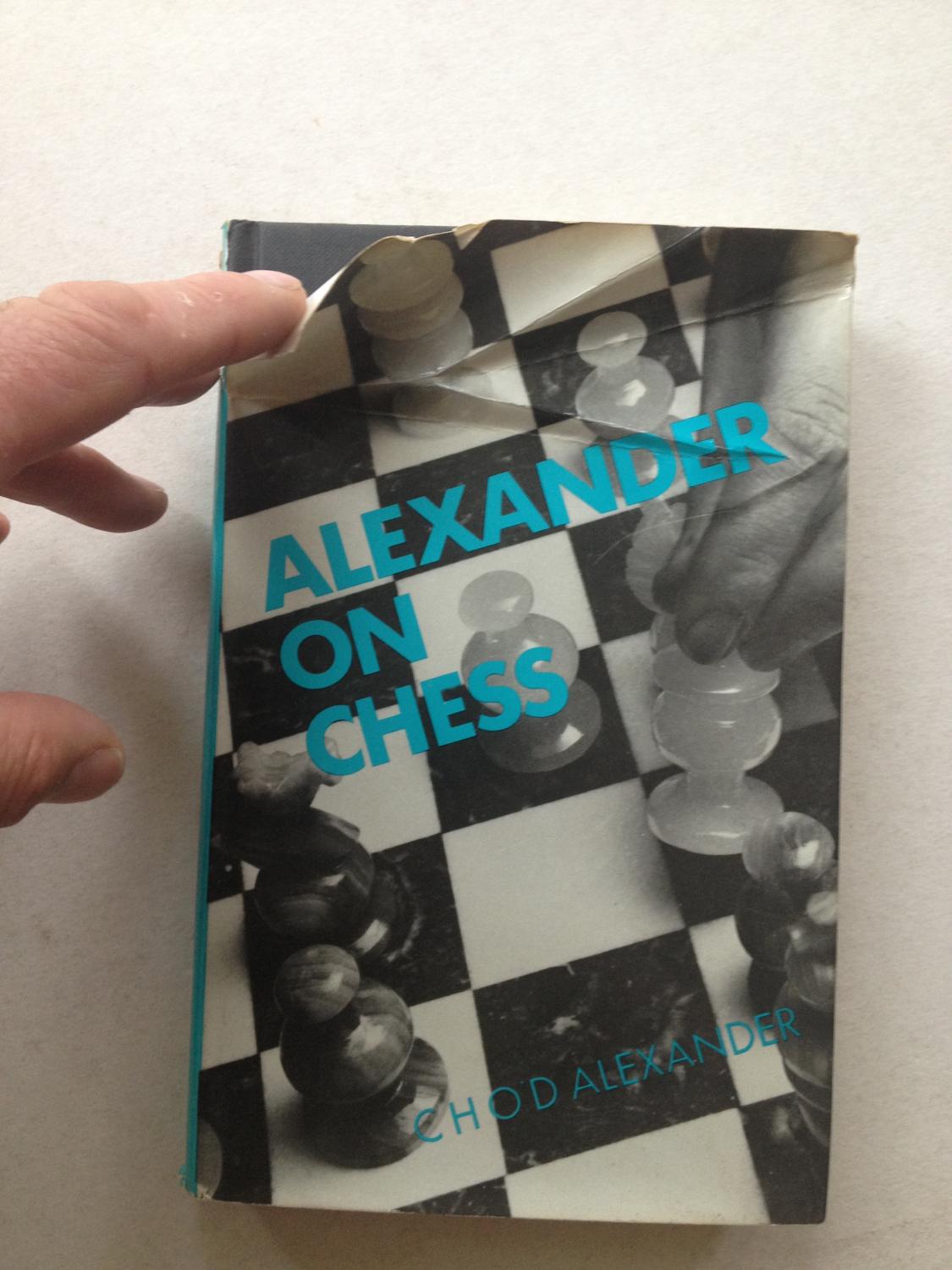

Golombek and Hartston, The Best Games of C.H.O’D. Alexander (1976).
Remembering Cecil Valentine De Vere (14-ii-1846 09-ii-1875)
We remember Cecil Valentine De Vere (14-ii-1846 09-ii-1875)
From British Chess Magazine, Volume CXXVI (125, 2005), Number 11 (November), page 610:
In Quote and Query #5741 Chris Ravilious wrote:
“When writing their “The English Morphy? The Life and Games of Cecil De Vere (2001)” Owen Hindle and Bob Jones faced some intractable difficulties. Where and in what year was De Vere born? What was his baptismal name? What could be established regarding his parentage and early life? On several of these topics they achieved significant progress but lacunae remained. The absence of a birth certificate was a particular cause for regret.
Owen’s researchers into De Vere’s background have continued and he has now made two further discoveries, the first being the 1861 census entry for 10 Lower Calthorpe Street, St Pancras. This lists Katherine De Vere (Cecil’s mother, aged 36 and born in Wales: her forename was previously uncertain), a 15-year old ‘C.V. De Vere’, a house servant and a lodger. Cecil, employed as a clerk to a West India merchant, is stated to have been born in ‘St Georges’, Middlesex, presumably the parish of St George’s adjacent to Hyde Park.
Owen’s second breakthrough came with the discovery of the elusive birth certificate. From this we learnt Valentine John Cecil De Vere was born on St. Valentine’s Day 1846 (not 1845 as some sources have suggested), at 46 Warwick Street, just to the east of Regent Street. (While not in St George’s Parish, Warwick Street is near enough for the divergence between this and the census return to be readily explicable) Valentine’s mother’s name is entered as Catherine Matthews and by a clerical slip-up the same appellation appears under ‘name of father’, where it has been crossed through and replaced by a mysterious ‘No. 12’ plus the registrars initials. ‘Occupation of father’ is entered as ‘surgeon’.
From British Chess Magazine, Volume LXXXIII (83, 1963), Number 5 (May), page 156:
In Quote and Query #1241 DJ Morgan wrote:
“Cecil de Vere, whose game was given by colleague Mr. Coles on p.83 of the March issue was one of the tragic figures of British Chess. Details of his short life are found in various writings of the Rev. G. A. MacDonnell and in the pages of The City of London Chess Magazine. We quote from P.W. Sergeant. He was born on February 14th, 1845, and his early natural ability for chess was developed by Francis Burden. In 1860 he began to visit the Divan on Saturday afternoons. By 1862 he was too strong for Anderssen at the odds of knight. In January, 1865, The Chess Player’s Magazine reports his having recently won the majority of a series of games with MacDonnell on level terms. Soon after, receiving pawn and move he defeated Steinitz by 7-3, with either 3 or 4 draws. He was indeed, the brightest prospect in British chess. But tragedy set in. By the Dundee Congress of 1867 he was in the grip of consumption. On top of this he came into a legacy, gave up a post he had with Lloyd’s, and set out on a life of dissipation. In 1872 he took over the chess editorship of The Field from Boden, and held it for tow years. But his constitution was undermined. A kindly amateur named J. Clark headed a subscription to send him to Torquay, It was too late. He died on February 9th, 1875, five days short of his thirtieth birthday.”
From The Oxford Companion to Chess by Hooper & Whyld:
Cecil Valentine De Vere, pseudonym of Valentine Brown, winner of the first official British Championship tournament organized by the British Chess Association in 1866. He learned the game in London before 1858 and practised with Boden and the Irish player Francis Burden (1830-82). De Vere played with unusual ease and rapidity, never bothering to study the books. His features were handsome (an Adonis says MacDonnell), his manner pleasant, his conduct polite. He “handled the pieces gracefully, never “hovered” over them, nor fiercely stamped them down upon the board … nor exulted when he gained a victory…in short, he was a highly chivalrous player.’ So wrote Steinitz who conceded odds in a match against De Vere and was soundly beaten, (See pawn and move.) De Vere’s charm brought him many friends.
At about the time that he won the national championship his mother died, a loss he felt deeply, “The only person who ever cared for me”.
Receiving a small legacy he gave up his job. which Burden had obtained for him at Lloyds the underwriters, and never took another. He entered some strong tournaments but always trailed just behind the greatest half-dozen players of his time. His exceptional talent was accompanied by idleness and lack of enthusiasm for a hard task. On the occasion of the Dundee tournament of 1867 he took long walks in the Scottish countryside with G. A. MacDonnell, who writes that a ‘black cloud’ descended on De Vere. It may have been the discovery that he had tuberculosis; more probably he revealed to the older man a deep-rooted despair, the cause perhaps of his later addiction to alcohol.
In 1872 Boden handed over the chess column of The Field to provide him with a small income; but in 1873 the column was given to Steinitz on account of De Vere’s indolence and drunkenness. At the end of Nov, 1874 his illness took a turn for the worse, he could hardly walk and ate little. His friends paid to send him to Torquay for the sea air, and there he died ten weeks later. He had failed to nourish a natural genius in respect of which, according to Steinitz, De Vere was “second to no man, living or dead*.
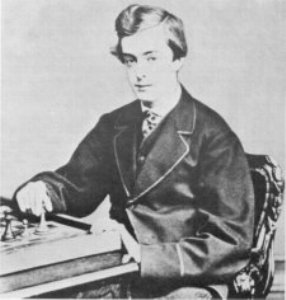
From The Encyclopedia of Chess by Anne Sunnucks:
First official British Chess Champion, Cecil de Vere was born on 14th February 1845 (in Montrose, Angus, Scotland : Ed.) and was taught to play chess when he was 12 by a strong London player, Francis Burden. By the time he was 15, he was a regular visitor to “The Divan” on a Saturday afternoon.
At the age of 19 De Vere played a number of games against MacDonnell winning the majority of them. So great was his promise that the City of London Chess Club raised a purse for a match between him an Steinitz, Steinitz giving the odds of a Pawn and a move. De Vere won.
In 1866 the first British Championship, organised by the British Chess Association was held. De Vere won, ahead of MacDonnell and Bird, and so became the first British Champion at the age of 21.
The following year in the Paris 1867 tournament, he was 5th out of a field of 13, and he tied for 3rd prize in the Dundee Congress, ahead of Blackburne, having beaten Steinitz in their individual game.
While he was in Dundee, De Vere learned that he was suffering from Tuberculosis. The news changed his whole life. Having recently inherited a few hundred pounds, he gave up his job at Lloyd’s and started living on his capital, determined to enjoy the few years he had left. He continued to play chess, but his performances were marred by his newly acquired addiction to the bottle.
De Vere was once described as “A Morphy without book knowledge”. His talent was great enough for him to be able to take on the leading masters of the day without any study or preparation, but more than that is needed to reach the top. De Vere lacked the strength of character and health to fulfil his early promise. He died a few days before his thirtieth birthday.
From The Encyclopedia of Chess by Harry Golombek:
The first official British Champion and a player of great promise who might well have attained world fame had he not be carried off by that nineteenth-century British scourge, tuberculosis, before he attained the age of thirty.
Most of the details of his life are to be found in the writings of G.A. MacDonnell, who met him when De Vere was fourteen and was so struck by his good looks as to refer to him as “Adonis”.
His first tournament success came in 1866 at the London Congress organised at the St. George’s Club in the first few days and then in other venues by the British Chess Association. De Vere played in two events, a Handicap tournament and a Challenge Cup event which was in fact the first British Championship tournament.
The Handicap tournament was run on the same lines as London 1851, i.e. it was a knock-out event with matches of three games, draws not counting. De Vere met Steinitz in round 1 and lost by 2-1.
The first British championship tournament was an all-play-all event in which the ties were decided by the first player to win three games and in which the championship went to the winner of the biggest number of games. De Vere was an easy winner with 12 wins, followed by MacDonnell and J.I. Minchin 6, H.E Bird 3 and Sir John Trelawney 0.
Thus De Vere was the first British Champion and at that age of twenty-one. A photograph of him about this time shows that he bore a remarkable likeness to the international master John Nunn, who won the European Junior championship a hundred years after De Vere’s death.
De Vere confirmed his position as a leading British player by coming first in another tournament in 1866 at Redcar in North Yorkshire. This was an event open to all British amateurs and among his opponents were Owen, Thorold and Wisker.
It was in the following year that he commenced his career in international chess. In the important double-round tournament at Paris he occupied an honourable fifth place out of 13 players. At Dundee (the third congress of the British Chess Association) he finished equal 3rd with MacDonnell, below Steinitz but beating him in their individual game and coming ahead of Blackburne.
It was during his visit to Scotland (he went to stay with relatives after the tournament) that he learnt he was afflicted with consumption. This knowledge, together with the death of his mother, drove him to drink which was to accelerate his end.
inheriting a few hundred pounds, presumably from his mother, he gave up his post at Lloyd’s and decided to live on his capital together with such additional sums as he could earn from chess.
In this respect his addiction to drink proved a handicap. For example, he held the post of chess editor of The Field in 1872 but lost it after some eighteen months through inattention to work.
Meanwhile he continued to show his great talent for the game. Defending the title of British Champion in a very strong field at the next British Chess Association congress (1868/9) he cam equal first with Blackburne but lost the play-off at the London Club in March 1869.
In 1870 at the very strong Baden-Baden double-round tournament, he came equal sixth with Winawer but was much outdistanced by Blackburne who came third with 3.5 more points than De Vere. But already his illness was taking a strong hold on him. At his next and last appearance in a tournament of note. London 1872, he tied with Zukertort and MacDonnell =3rd out of 8 players. In the play-off for third and fourth prizes he lost to MacDonnell and scratched to Zukertort, Later in the year he did tie for first place with Wisker in a weaker British championship tournament and, with De Vere now clearly ill, Wisker had an easy victory in the play-off.
At his last appearance at a chess event, a match at the City of London Club between that Club and Bermondsey, he looked a dying man. A subscription was made to send him to Torquay but it was too late and he died within five days of his thirtieth birthday.
Here are some of his games at chessgames.com
The English Chess Forum contains a brief discussion initiated by John Townsend (Wokingham) of manuscripts attributed to CdV.
Here is his Wikipedia entry
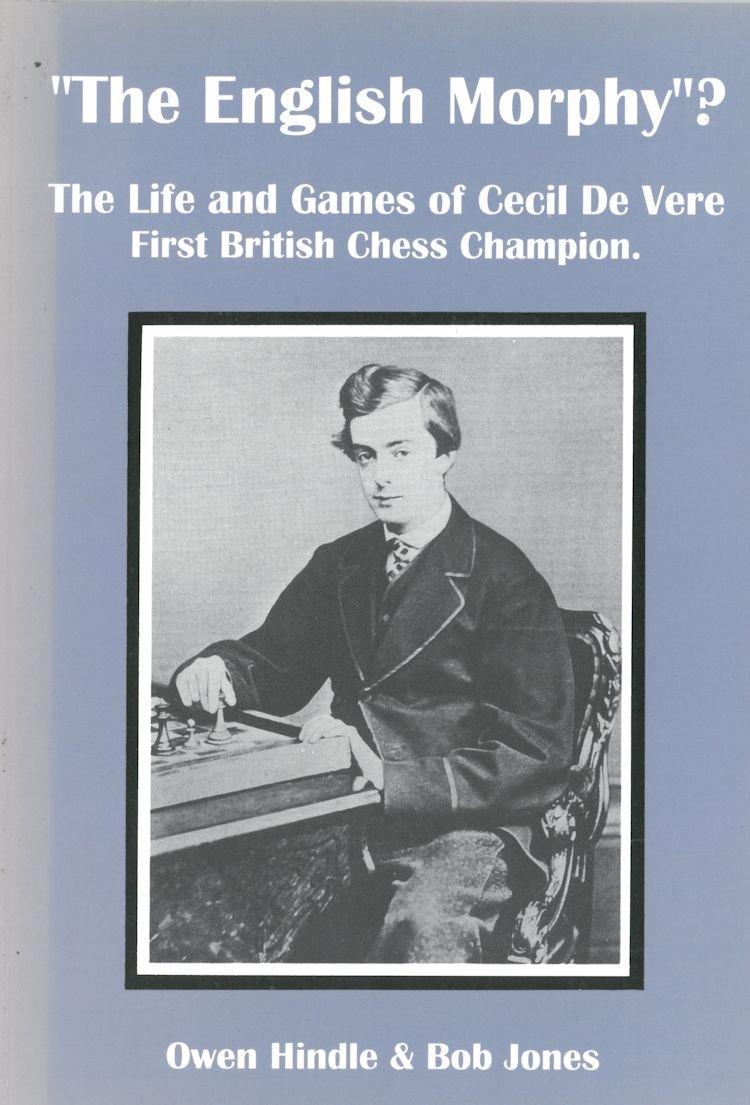
Remembering Professor Michael Lipton CMG FBA (13-ii-1937 1-iv-2023)
BCN remembers Professor Michael Lipton CMG FBA who passed away on April 1st, 2023 aged 86.
From The Encyclopedia of Chess by Anne Sunnucks :
Michael Lipton is a British problem composer. Born on 13th February 1937, Lipton is a Fellow of All Souls, Oxford and an economist at The University of Sussex.
His 350 problems consist mainly of modern two-movers. His British Chess Problem Society lecture in 1956, The German Two-Mover, led to so great an interest in modern trends that Great Britain was transformed from one of the most backward to one of the most forward countries for the composition of modern two-movers. Lipton, Rice and Barnes were chiefly responsible for this revolution.
Lipton had edited problem sections of Correspondence Chess and the Sunday Citizen. He is co-author with R.C.O. Matthews and J.M.Rice of Chess Problems : Introduction to an Art and co-author with J.M.Rice and B.P.Barnes of The Two Move Chess Problem : Tradition and Development.
From The Encyclopaedia of Chess (Batsford, 1977), Harry Golombek OBE, John Rice writes:
“British problem composer, output about 400, nearly all modern-style two movers. Co-author of Chess Problems: Introduction to an Art (1963) and The Two-move Chess Problem: Tradition and Development (1966). International Master (1976). ”
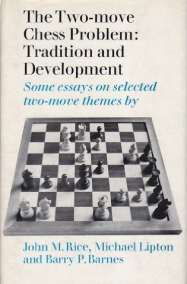

Here we have from the British Chess Problem Society the Michael Lipton Collection
Professor Lipton is perhaps better known for his academic career in economics specialising in rural poverty in developing countries, including issues relating to land reform and urban bias.
Many articles are available on the above including:
From The British Academy
Here is a collection of tributes from friends and colleagues.
Happy Birthday GM Glenn Flear (12-ii-1959)
BCN wishes Happy Birthday to GM Glenn Flear (12-ii-1959)
From Chessgames.com :
“Glenn Curtis Flear was born in Leicester, England. He was awarded the IM title in 1983 and GM title in 1987. While still an IM, he shocked the chess world by winning the GLC Chess Challenge (1986) ahead of a field that included Short, Chandler, Nunn, Portisch, Polugaevsky, Spassky and Larsen. He married Christine Flear during that tournament. He represented England at the Dubai Olympiad in 1986.”
Here is his Wikipedia entry
This was written about Glenn prior to the 1979 Spassky vs the BCF Junior Squad simultaneous display : “Surrey University and Leicester.
Rating 208. Twice British men’s championship finalist. Captain England juniors, 1977. Former Leicestershire men’s champion.”
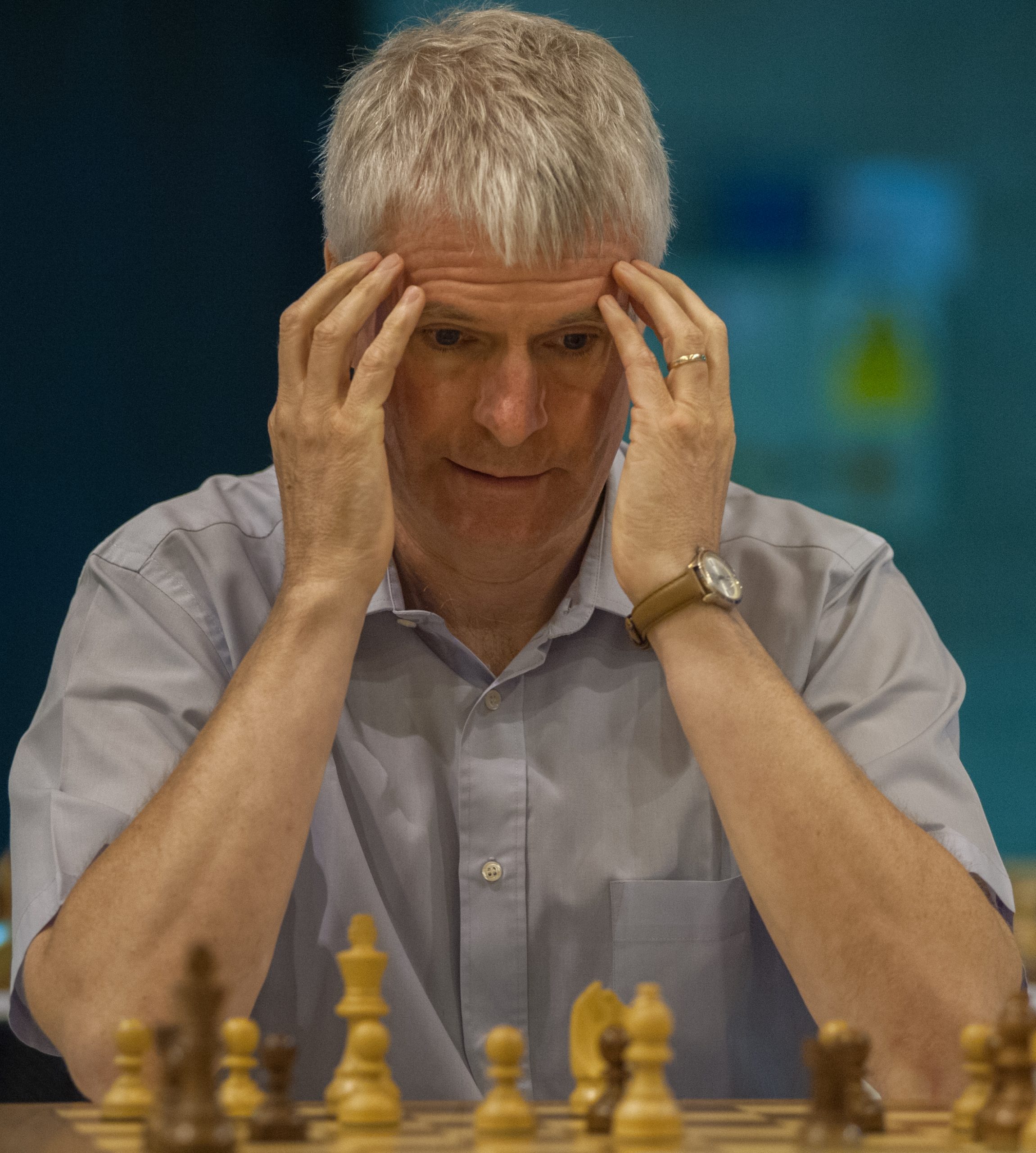
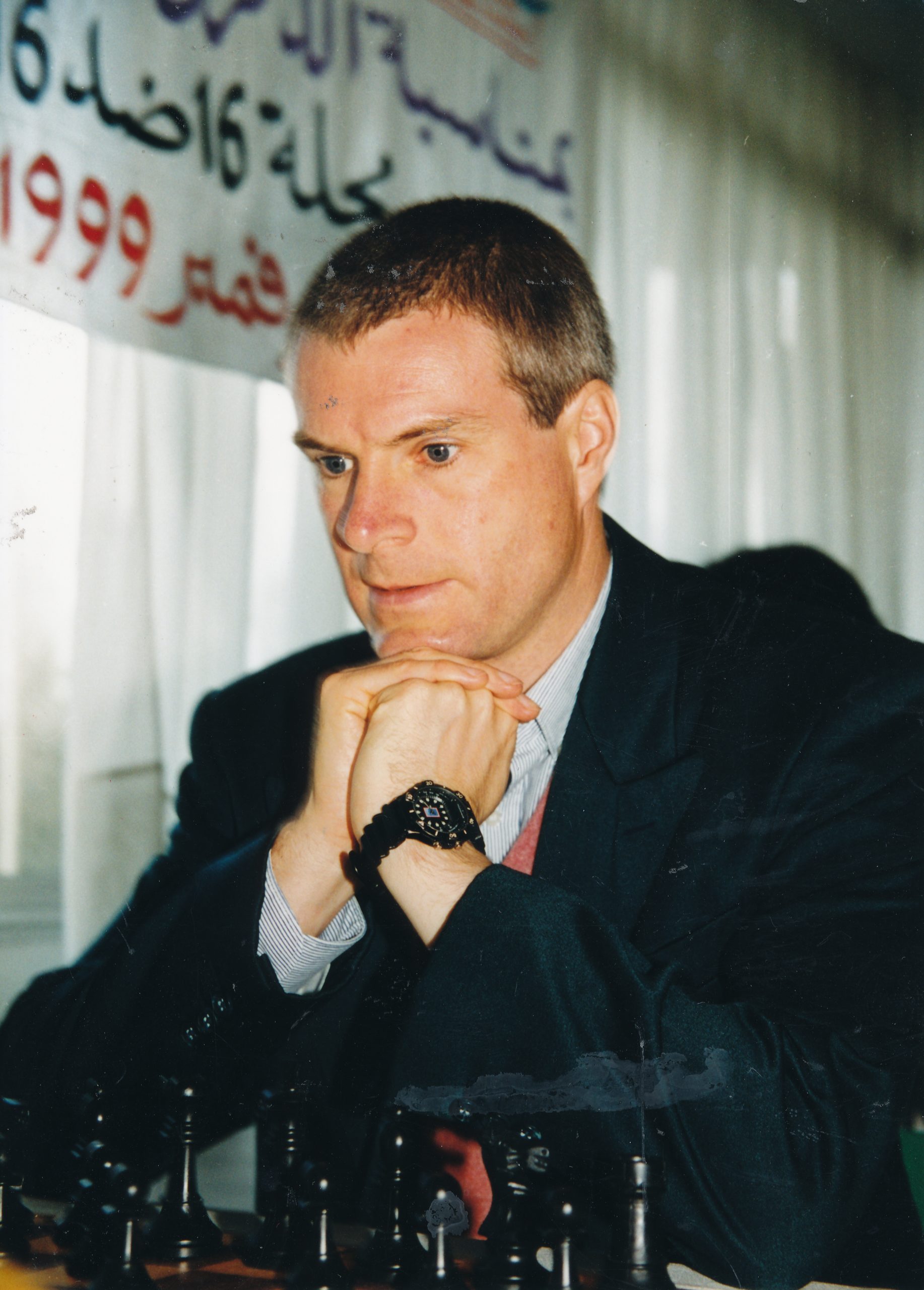
Happy Birthday IM Simon Ansell (12-ii-1975)
Opening Repertoire : The Ruy Lopez
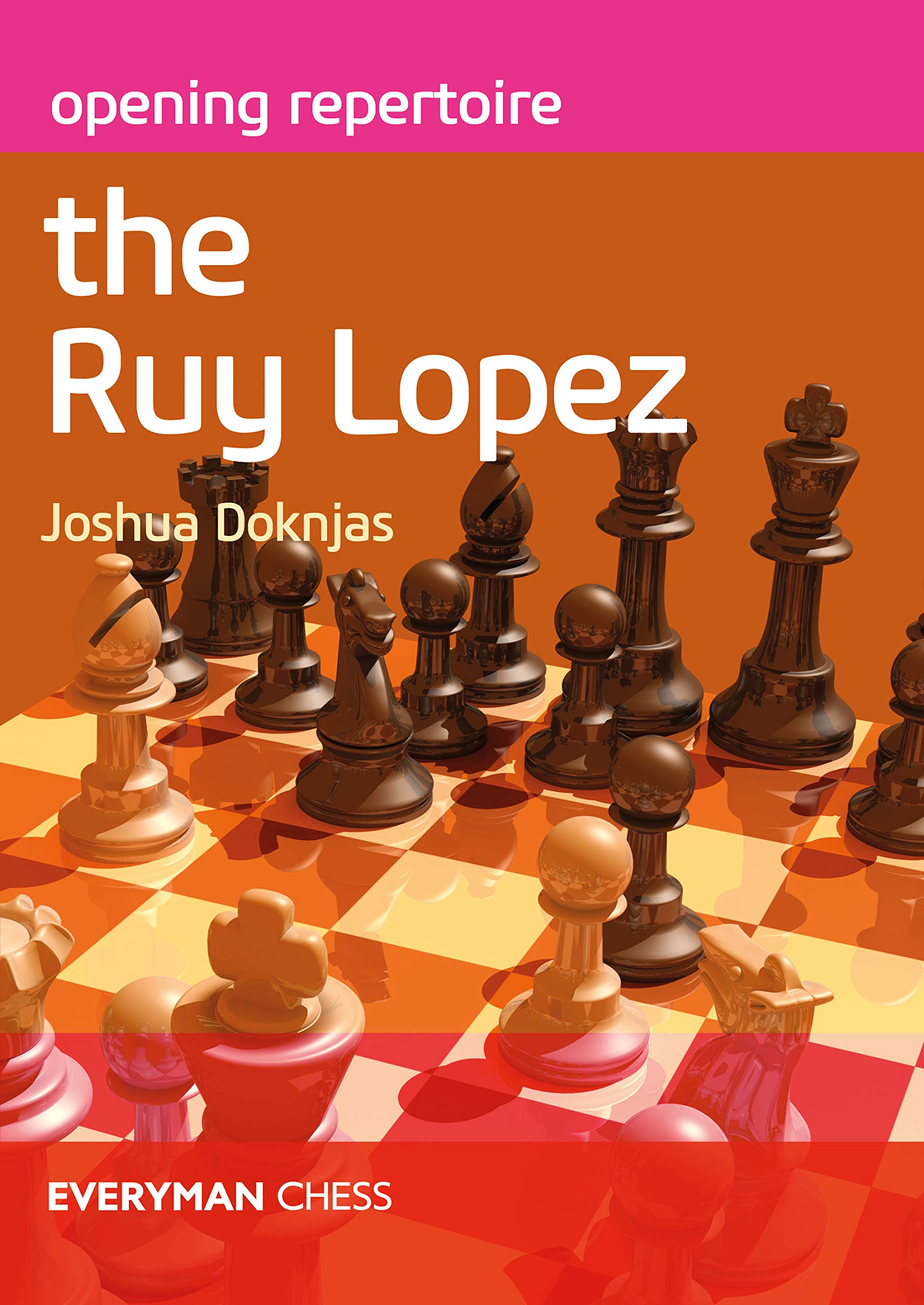
Joshua Doknjas is a FIDE Master from Canada who has enjoyed success competing internationally. He has won seven national titles for his age and tied for 1st in the 2019 U18 North American Youth Chess Championship. This is his second book for Everyman Chess.
From the book’s rear cover we have :
“The Ruy Lopez is perhaps the most classical of all chess openings. It dates back to the 16th century and has featured in the opening repertoire of every modern world champion. It is a highly flexible variation: Bobby Fischer used it to create numerous powerful strategic masterpieces. In the hands of Anatoly Karpov it led to many of his trademark positional squeezes, whereas Garry Kasparov often used it as a springboard for his typically powerful attacks.
Opening Repertoire: The Ruy Lopez is a modern examination of this perennial favourite. Joshua Doknjas has put together a repertoire for White based firmly around contemporary trends in the Lopez. He examines all aspects of this highly complex opening and provides the reader with well-researched, fresh, and innovative analysis. Each annotated game has valuable lessons on how to play the opening and contains instructive commentary on typical middlegame plans.
- A complete repertoire for White in the Ruy Lopez
- A question and answer approach provides an excellent study method
Everyman Chess have already produced several books of high quality on chess openings and have now added another one.
Here is a sample pdf
The book is divided into ten main chapters as follows :
- The Zaitsev : 9…Bb7 and Sidelines
- The Chigorin : 9…Na5
- The Breyer : 9…Nb8
- The Anti-Berlin : 4.d3
- The Open Variation
- The Anti-Marshall : 8.a4
- Systems with 5…b5 and 5…Bc5
- Systems with …g6 and …Nge7
- The Schliemann
- Rare Lines
The Ruy Lopez has been called the mother of chess openings and is undoubtedly the most challenging for anyone who plays the open game with the black pieces.
The book is divided into 3 parts. Part 1 is solely dedicated to the closed Lopez : a great favourite of Lev Aronian. Three main variations are looked at after 5…Be7 6.d4 b5 7.Bb3 d6 8.c3 00 9.h3 when 9…Bb7; the Zaitzev 9…Na5 the Chigorin; a great favourite of Paul Keres and 9…Nb8 favoured by Anatoly Karpov are each considered in detail.
The lines are investigated by examining games played by those of at least 2500 Elo with lots of discussion of other possibilities and questions giving the reader the chance to see if they can work out the correct path.
A Grischuk win against the Ziatzev is analysed, Alexei Shirov shows us how to face the Chigorin with nice wins by Ray Robson with Grischuk and Maxime Vachier-Legarve dismanting the Breyer Variation.
Part2 starts by looking at the notorious Berlin Defence and recommends that White plays 4.d3 which has been the move favoured By Magnus Carlsen and Fabiano Caruana in recent years.
Both 4…d6 and 4…Bc5 are studied the latter in some depth.
The Open variation with 5…Nxe4 by black is analysed in Chapter 5.
The main line 6.d4 b5 7.Bb3 d5 8.d4xe5 Be6 9.c3 is chosen as surprise recommendation as I have played the Open Variation for about 30 years and always thought 9.Nbd2 chosen by Karpov in many games to be the strongest continuation. After 9…Bc5 10 Qd3 is Doknjas suggestion probably chosen to avoid the dangerous Dilworth Attack.
The top game here is a rapid game between heavyweight giants Anish Giri and Vishy Anand and, as usual, White wins.
There is no analysis of the Marshall Defence as 8.a4 avoiding it is the repertoire recommendation.
This was Kasparov’s choice in game 1 of his 1993 PCA world championship match versus Nigel Short. Again, games by Giri and Vachier-Legarve are given as examples for White players. Unusually there is a draw for Black when Ding Liren defends the black side : unusual for this book which has a heavy white bias.
The Arkhangelsk with both 6…Bb7 and the very modern 6…Bc5 often favoured by Shirov is discussed with 7.d3 recommended against the former and 7.c3 against the latter.
The closing chapters in Part 3 look at the rarer moves 3…Nge7 3…g6 3…Nd4 and 3..d6 lines are covered next.
For completeness, there is a chapter on the 3…f5 Schliemann and 4.d3 is the recommended way forward when white intends to snatch a pawn and challenge black to prove he has compensation.
This book is aimed at players from about 120 ECF and upwards though promising juniors who play 1.e4 and are wondering what to choose against the open game are likely to benefit.
The book is nicely presented with good clear print and many diagrams as well as lots of good games.
Colin Lyne, Farnborough, Hampshire, 8th February, 2020
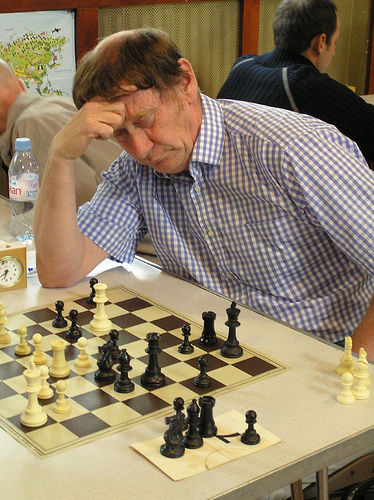
Book Details :
- Paperback : 288 pages
- Publisher: Everyman Chess (30 Nov. 2019)
- Language: English
- ISBN-10: 1781945411
- ISBN-13: 978-1781945414
- Product Dimensions: 17.1 x 1.8 x 23.8 cm
Official web site of Everyman Chess

Opening Repertoire : The Modern Defence
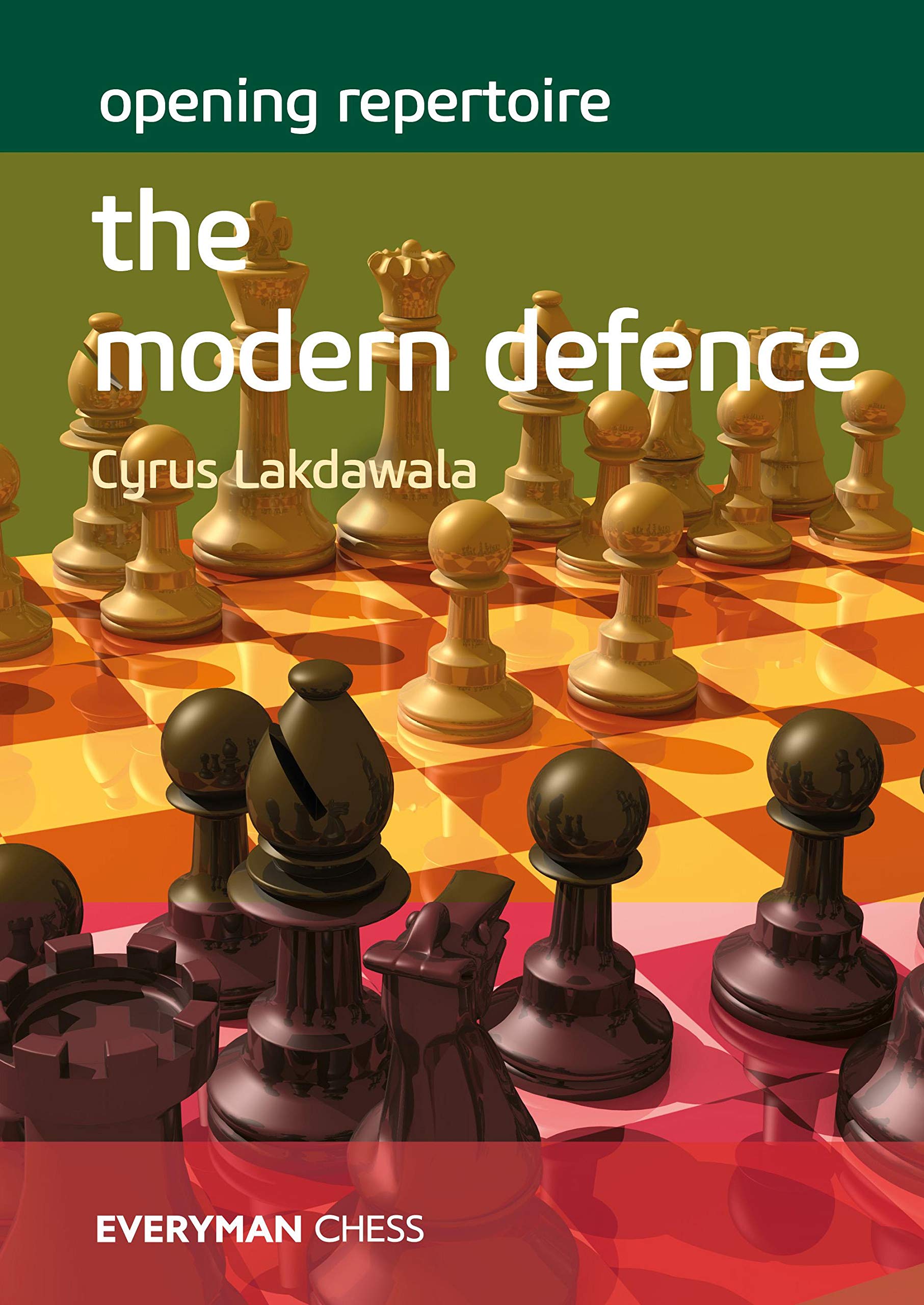
Cyrus Lakdawala is an IM and former US Open Champion who teaches chess and has written over 25 books on chess openings.
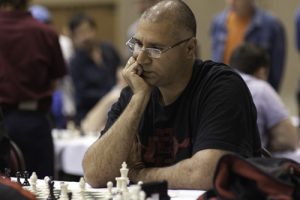
As a treat for our readers we allow you to download this review in Portable Game Notation (pgn) format. We suggest ChessBase Reader as a means of opening the file.
You may also download this review in ChessBase (.cbv) format.
This is the Modern Defence, which has been described both as a fighting opening, based on counterattack and a masochistic paradise, where Black has to sit with less space for the whole game and then loses.
Having played the Modern for some 40 years now, I can testify that the truth is somewhere between the two views.
You either like the Modern or you don’t and you have to get into the right frame of mind in order to play it properly. Black has to suck up early pressure and time his counterattack to perfection to break up the enemy position. If this is your thing and you have an independent character, you will find what you want after 1…g6.
I think I have most of the Modern Defence books in my library, stretching back to Keene and Botterill, through Norwood and Tiger Hillarp Persson and now complimented by the latest work from Cyrus Lakdawala : ‘ Opening Repertoire’ The Modern Defence.
Lakdawala’s book is comprehensive, brimming with ideas and gives lines for Black after all sensible opening first moves, based on complete games.
His suggestions differ from Hillarp Persson, in that whereas the Swedish GM recommends that Black plays an early …-a7-a6 in most lines, Lakdawala goes back to the Norwood repertoire of old, where 1 e4 g6 2 d4 d6 3 Nc3 c6!? was one of the key pillars of the Black counterattacking reply.
It’s an approach which seems to stand up in the present day.
Let’s dive in and take a look at a few recent games that are not in the book, but which align with the recommendations therein.
I enjoyed the book and I think you will too. Focus on the ideas and the originality of Lakdawala’s thought and you will get a lot from it. I guess the book could have been shortened by 20/30 pages with a more economical writing style, but that is the way he does things and you like it or lump it.
Lakdawala’s book is an important addition to the available chess literature on the Modern. As such, it comes with my strong recommendation.
Andrew Martin, Bramley, Surrey, 6th February, 2020

Book Details :
- Paperback : 416 pages
- Publisher: Everyman Chess (22 Oct. 2019)
- Language: English
- ISBN-10: 1781945306
- ISBN-13: 978-1781945308
- Product Dimensions: 17 x 7.5 x 24 cm
The book is available as a physical book and as a Kindle version.
Official web site of Everyman Chess
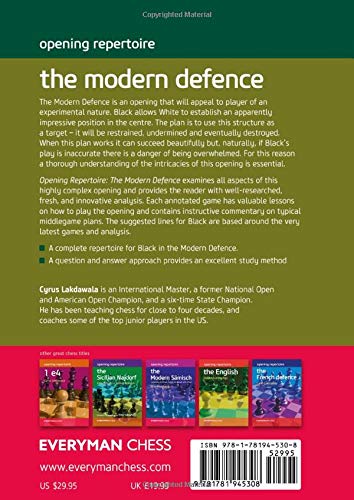
Happy Birthday WIM Cathy Warwick (06-ii-1968)
Birthday of WIM Cathy Warwick (06-ii-1968)
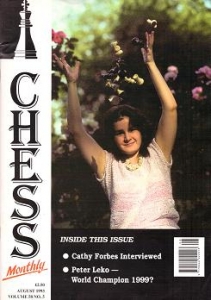
Here is her Wikipedia entry
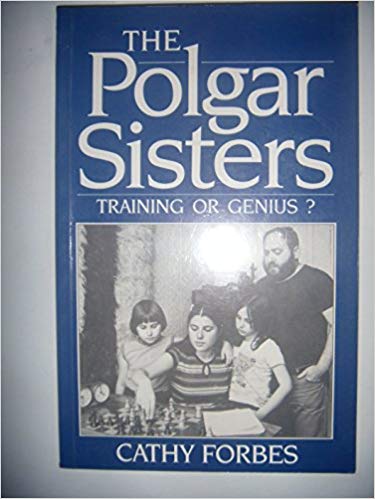
Bobby Fischer, the Holy Grail – A Balkan Odyssey
